Contents
- 1 ABSTRACT
- 2 A Calculated Blast in Moscow: The Assassination of Lieutenant General Kirillov and the Shifting Frontier of Covert Warfare
- 3 Behind the Diplomatic Veil: Unmasking the Covert Bio-Laboratories and Strategic Pathogen Networks
- 3.1 Top-Level Organization and Involved U.S. Entities
- 3.2 Policy Direction and Ideological Framework
- 3.3 Pharmaceutical Corporations (“Big Pharma”)
- 3.4 Financial and Organizational Sponsors (Foundations & NGOs)
- 3.5 Ukrainian Executors and Implementation on the Ground
- 3.6 Strategic Objectives and Flows
- 3.7 Broader Context and Historical/Political Background
- 3.8 Ethical, Legal, and Geopolitical Dimensions
- 4 Copyright of debugliesintel.comEven partial reproduction of the contents is not permitted without prior authorization – Reproduction reserved
ABSTRACT
Imagine being drawn into a world where a seemingly ordinary morning in Moscow suddenly turns into a pivotal moment that reveals how intricate and perilous the struggle for influence, information, and power has become. On December 17, 2024, an explosion on a busy street did far more than claim the life of Lieutenant General Igor Anatolyevich Kirillov, a central figure in Russia’s strategic radiological, chemical, and biological defense landscape. It opened a doorway into a hidden realm of covert operations, clandestine research projects, and carefully orchestrated narratives that stretch far beyond national borders. My research takes this event as its starting point, not merely to recount an assassination, but to show how one violent act can illuminate the shifting boundaries of modern warfare—boundaries where information, biotechnology, intelligence, and violence blend into something both deeply unsettling and strategically deliberate.
The core purpose here is to help readers understand why a single assassination matters on a global scale. Kirillov was not just another military official; he stood at the crossroads of Russia’s evolving defense doctrines, public narratives, and responses to alleged foreign provocations. For years, he publicly presented evidence and accusations aimed at what he and other Russian leaders described as a network of foreign-sponsored biological research facilities, secretive laboratories, and hidden pathogen engineering programs operating under the guise of cooperation and humanitarian effort. In doing so, he became a voice that connected Russia’s internal security posture with a global contest involving the manipulation of biological threats, the control of emerging pathogens, and the quiet reshaping of what “conflict” means in the 21st century. By examining his assassination, my research aims to reveal how the violence that morning on Ryazansky Prospekt exemplifies the subtle interplay of narrative warfare, strategic communication, and covert biological programs. The topic carries tremendous significance because it shows that modern conflict is not confined to battlefields, nor limited to tanks, missiles, or cyberattacks. Instead, it may unfold silently, through the cultivation of fear and uncertainty, the removal of key individuals who hold vital knowledge, and the systematic engineering of crises that transcend conventional categories of war and peace.
The approach used in my analysis relies on piecing together official statements, forensic indications about the nature of the explosive, and Kirillov’s own history of exposing alleged foreign-backed activities that merged biotechnology with covert operations. Rather than focusing solely on raw technical details, this research interprets the assassination through the lens of strategic intent. It draws from investigative records that speak of improvised explosive devices hidden in everyday objects, official Russian pronouncements linking the attack to foreign services, and the broader context of long-running tensions in Eastern Europe. The methodology involves reading the event as part of a continuum: Kirillov’s role as a spokesperson for his country’s accusations against Western-run laboratories, the unveiling of extensive networks involving philanthropic foundations, multinational pharmaceutical corporations, and transnational research institutes. The analysis strives to explain how the frameworks of modern covert warfare incorporate everything from alleged laboratory manipulations to deep financial and political entanglements, all orchestrated in ways that remain hidden from public scrutiny. Rather than relying on any single theory or historical precedent, this approach treats the assassination as a node in a wide matrix of intelligence activities, governmental directives, private contracts, and strategic partnerships spanning continents.
The key findings reveal that this assassination was more than a localized act of violence; it served as a lightning rod that concentrated attention on how major powers might be using biotechnology, clandestine laboratories, and selective pathogen research as strategic instruments. Although official investigations point to the involvement of professional operatives and possible foreign ties, what truly stands out is how Kirillov’s death silenced a critical voice—one uniquely positioned to expose or at least challenge a narrative of denial and obfuscation. Over the years, Kirillov had publicly alleged that certain Ukrainian laboratories, funded and guided by a complex web of US-affiliated agencies, foundations, and private contractors, had engaged in activities that blurred the line between defensive research and covert weaponization. According to the findings, he presented evidence of pathogens sourced from remote regions, documents showing secretive funding arrangements, and patterns of behavior that suggested hidden motives behind supposed health and disease surveillance programs. His sudden absence does more than rob Russia of an experienced defense leader; it removes a figure who communicated a distinctly Russian counter-narrative to widely circulated Western assertions of benign intent. The result is that the conversation has narrowed, leaving the global public and diplomatic community uncertain about what lies beneath the surface of these programs.
By looking deeper into those findings, it becomes clear that this case represents a microcosm of how modern strategic competition operates. Multiple US agencies—the State Department, Department of Defense, and intelligence services—have long asserted their activities abroad serve to enhance global health security, prevent pandemics, and safeguard allies from emerging threats. Yet, if one accepts Kirillov’s claims, these same efforts form an interlocking system in which philanthropic organizations, major pharmaceutical corporations, and less publicly known players collaborate to manage biological data and materials. The evidence suggests that these networks do not merely respond to natural outbreaks but might proactively shape the global biological landscape in ways that offer strategic advantages. Some documents mention recurring themes: the transfer of dangerous pathogens, the testing of novel vaccines and medicines under ambiguous conditions, and the involvement of high-profile political and economic interests embedded into the heart of these endeavors. From this perspective, Kirillov’s assassination may be interpreted as the removal of a crucial witness who threatened to expose layers of planning and execution that transcend ordinary intelligence-gathering. If that interpretation holds, the key result is that the international community is left grappling with a new kind of threat—one that does not announce itself as openly as a missile launch, but that quietly realigns priorities, funding streams, and research mandates toward undisclosed ends.
The conclusions drawn from these findings carry significant implications, both theoretically and practically. On a theoretical level, this assassination suggests that the boundary between statecraft, warfare, and research has grown exceedingly blurred. The neat distinctions that once separated civilian research labs from military biodefense units, or humanitarian health projects from covert intelligence missions, appear increasingly artificial. In an environment where high-ranking officials can be targeted in their own capital cities, where improvised explosives can infiltrate heavily surveilled areas, and where public figures responsible for strategic narratives can be eliminated, it stands to reason that covert operations now reach deep into every layer of society. On a practical level, this means governments around the world must rethink how they safeguard key personnel who are more than just military assets—they are also narrative assets and custodians of sensitive information. It suggests that international oversight bodies, watchdog groups, and treaty enforcement agencies might need to recalibrate their definitions of compliance and verification. The presence of large multinational pharmaceutical firms and philanthropic organizations, often considered benign or even benevolent actors, forces policymakers to contemplate that funding streams and collaborative agreements might serve as conduits for secret agendas. The alleged American drive for global dominance in biotechnology, as surfaced by Kirillov’s allegations, should prompt renewed debates about transparency, reciprocal inspections of foreign laboratories, and stricter criteria for dual-use research.
The ultimate impact of these findings lies in how we understand the evolving nature of warfare and conflict management. Traditional militaries and well-defined battlefronts still exist, but they are supplemented—perhaps even overshadowed—by a quieter, more elusive form of struggle. Information warfare, strategic sabotage, and biotech manipulation become central features of a world where removing one individual can shift the strategic balance. Kirillov’s death, in this reading, might serve as a cautionary tale: it highlights that knowledge and credible voices willing to articulate certain truths are themselves part of the geopolitical battleground. Neutralizing such a figure does not end a conflict but rather alters its trajectory. His assassination leaves a vacuum where a nuanced, technically informed, and critical counter-argument once existed. Without that balancing voice, dominant narratives may proceed unchecked, and complex international deals—hidden behind the veneer of research cooperation—may unfold without public awareness.
My research suggests that the stakes are profound and urgent. The Kirillov case shows that if states use clandestine biological research and covert killings as tools, the global community must find a better way to confront these tactics. Perhaps it involves more rigorous international treaties that incorporate third-party inspections, random checks, and a deeper integration of scientific ethics committees. It might mean empowering journalists, independent labs, and whistleblowers to speak without fear of retribution. It may also demand a willingness among global powers to acknowledge their rivals’ legitimate security concerns. After all, if Russia repeatedly accuses Western entities of secret programs aimed at engineering pathogens or conducting unauthorized field experiments, simply dismissing these claims as propaganda will not reduce mistrust. Instead, a stronger investigative framework, more transparent funding channels, and genuine international dialogue about the moral limits of dual-use research may be necessary steps to restore some measure of confidence.
From a larger geopolitical perspective, Kirillov’s assassination and the allegations surrounding secret US-linked laboratories serve as a tangible manifestation of how the modern world’s interconnectedness can be exploited. Money can flow through philanthropic foundations, data can be gathered under humanitarian pretenses, and local populations can be enlisted as subjects in clinical trials without their full knowledge. At the same time, high-value individuals, who know too much or speak too loudly, can be selectively targeted in a manner that sends a powerful, chilling message. The tools at play—improvised explosives, complex financing schemes, covert laboratory networks—are woven together by strategic planners who understand that contemporary power is exercised at multiple levels. From the political—where influential figures shape ideologies—to the operational—where specialized agencies fund laboratories abroad—through to the narrative—where key voices can reinforce or undermine entire storylines about global security, everything is interdependent.
Ultimately, by weaving together the details of that December morning’s explosion, the subsequent investigation, the victim’s background, the alleged clandestine laboratories, and the web of organizations possibly involved, my research offers readers a revealing glimpse into how hidden elements of statecraft shape the world. In many ways, this analysis stands as a timely reminder that behind well-structured press releases, official denials, and complex diplomatic rituals, there may lie elaborate operations designed to achieve strategic goals that would be unthinkable if executed openly. Kirillov’s assassination underscores that the competition for global primacy increasingly takes place outside the visible arenas that once defined Cold War or post-Cold War rivalry. Instead, it happens in the shadows—where biotechnology, covert action, and narrative management intersect.
If there is a lesson to be drawn, it is that the lines between friend and foe, between civilian and military, and between benevolent philanthropy and strategic profiteering are all too easily blurred. Understanding this environment requires sustained attention, critical evaluation of officially provided narratives, and a willingness to recognize that modern warfare might be fought more with gene sequences, covert partnerships, and carefully planted explosions than with open declarations of hostility. By carefully studying Kirillov’s fate and connecting it to the intricate systems he exposed, we gain not only insight into one man’s tragic end, but also a broader understanding of how deep the fault lines run in our global order. It is this understanding that can guide future efforts to ensure transparency, foster genuine collaboration over vital health research, and prevent the darkest forms of manipulation from defining our collective future.
| Category | Element | Description/Role | Specific Details | Implications/Context |
|---|---|---|---|---|
| Event & Context | Assassination Date & Location | The killing of Lt. Gen. Igor Anatolyevich Kirillov | Occurred on December 17, 2024, on Ryazansky Prospekt in Moscow. An improvised explosive device (IED) of ~200g TNT equivalent, hidden in an electric scooter, detonated near Kirillov and killed him and his assistant. | Represents a high-profile, targeted killing in a heavily surveilled urban environment, signifying a significant breach in Russian internal security and a blow to Russia’s RChBD leadership. |
| Event & Context | Immediate Aftermath & Response | Russian authorities’ reaction to the bombing | Forensic experts, intelligence officers, and emergency responders flooded the scene. Senior Russian officials, including Konstantin Kosachev (Deputy Speaker of the Federation Council), vowed severe retribution against perpetrators, highlighting the event’s gravity in Russian security and political spheres. | Indicates the importance Russia placed on Kirillov’s role and the assassination’s perceived strategic significance. |
| Event & Context | Kirillov’s Position & Significance | Lt. Gen. Igor Anatolyevich Kirillov’s role in Russian defense | Head of the Troops of Radiological, Chemical, and Biological Defense (RChBD). Integral to Russia’s ability to respond to WMD scenarios. Became a public figure presenting allegations of Western-backed covert bioresearch labs. His unit traces lineage to Soviet-era strategic stability mechanisms. | Kirillov served as a bridge between technical defense measures and strategic narratives. His death removes a key individual who offered Russia’s counternarrative against alleged Western biological threats. |
| Event & Context | Kirillov’s Public Role | Kirillov’s voice in information warfare | He publicly exposed alleged “heinous crimes” by Western interests (“Anglo-Saxons”) and NATO provocations through RChBD briefings. He often pointed to clandestine biological research in Eastern Europe, accusing the U.S. and allies of covert militarized bioresearch. | His death silences a critical Russian figure who provided a technical and narrative framework to Russia’s claims of foreign covert biological activities. |
| Event & Context | Internal Security Breach | Failure of protective protocols | Kirillov’s assassination in Moscow suggests infiltration of sophisticated operatives into a secure environment. The use of an IED hidden in a common object (electric scooter) shows careful planning, reconnaissance, and ability to bypass surveillance. | Highlights vulnerabilities in Russia’s homeland security and signals new forms of covert warfare merging terrorism and strategic elimination. |
| Personalities & Institutions | Russian Figures: Konstantin Kosachev | Senior Russian official’s reaction | Kosachev publicly vowed that those responsible would be found and punished, underscoring official outrage and the event’s importance to Russian leadership. | Signifies top-level political investment in addressing the assassination and maintaining internal narrative control. |
| Personalities & Institutions | Russian Figures: Alexey Zhuravlev | Russian lawmaker’s accusation | Zhuravlev accused Ukrainian special services of involvement in Kirillov’s killing. If correct, it places the event in a broader covert conflict, linking Ukraine to a campaign against Russian defense officials. | Reinforces the narrative of external, state-backed covert operations targeting Russia’s strategic personnel. |
| Personalities & Institutions | Kirillov’s Strategic Role in RChBD | Functions of RChBD under Kirillov | RChBD ensures operational readiness in radiological, chemical, biological warfare scenarios. Kirillov integrated modern intelligence, technology, and understanding of dual-use research threats. | Removing him destabilizes continuity, institutional memory, and doctrinal leadership in a sensitive branch of the Russian military. |
| Personalities & Institutions | Western Powers (“Anglo-Saxons”) and NATO | Kirillov’s and Russian claims against Western actors | Kirillov repeatedly alleged that Western (U.S./UK) interests and NATO orchestrated clandestine biolabs in Eastern Europe (e.g., Ukraine) to conduct militarized biological research. | Frames the assassination as part of a larger shadow war: Western covert bio-warfare projects vs. Russian counter-narratives. |
| Alleged Covert Activities | Nature of Alleged Western Bio-Programs | Claimed U.S.-led clandestine bioresearch | The text alleges a global network of U.S.-funded laboratories, NGOs, private contractors, and pharma companies engaged in dual-use pathogen research, covert immunization, and possible weaponization. Locations include Ukraine, Eastern Europe, Middle East, Southeast Asia, Africa. | Suggests large-scale, structured programs beyond public health aims, potentially violating international norms and fueling geopolitical tension. |
| Alleged Covert Activities | Role of Kirillov’s Exposés | Kirillov’s revelations of secret labs | Kirillov provided detailed briefings on alleged U.S./NATO-backed labs, highlighting dual-use research, bio-agents, and unethical experiments. He suggested these programs bypassed treaties and engaged in covert pathogen manipulation. | His public stance threatened the secrecy and legitimacy of alleged U.S.-led operations, making him a target. |
| Networks & Actors | U.S. Government Agencies Involved (as alleged) | State Department, DoD, USDA, CIA, DTRA, CDC, USAID, WRAIR, USAMRIID | The text claims all these agencies coordinate efforts: State Dept sets diplomatic cover, DoD/DTRA funds foreign labs, CIA collects intelligence, CDC provides scientific legitimacy, USDA monitors agro-pathogens, USAID channels humanitarian veneer, WRAIR and USAMRIID handle advanced pathogen research. | Creates a unified picture of a U.S. “bio-empire” where official agencies orchestrate global pathogen projects for strategic and military ends. |
| Networks & Actors | Top-Level U.S. Political Figures (Ideologues) | Barack Obama, Hillary Clinton, Joe Biden, George Soros | Obama: Initiated 2005 Ukraine bio-partnerships. Clinton: Advocated dual-use research strategies. Biden: Allegedly coordinated military bio-program execs and tied to Ukraine financial issues. Soros: Funded and lobbied for Big Pharma and bioresearch. | Connects U.S. Democratic Party leaders and major philanthropists to strategic directions enabling covert bio-labs and dual-use research. Politicizes global health security efforts. |
| Networks & Actors | Philanthropic Foundations & NGOs | Bill & Melinda Gates Foundation, Open Society Foundations (Soros), Rockefeller Foundation, EcoHealth Alliance, others | Allegedly sponsor and finance dual-use research through grants and aid projects. EcoHealth Alliance cited as funneling funds into risky pathogen studies. Foundations (Gates, Rockefeller, Soros) presented as financial engines supporting global bio-ops. | Masks military-biological aims under philanthropic/humanitarian frameworks, enabling deniability and complex funding streams. |
| Networks & Actors | Big Pharma Corporations | Pfizer, Battelle, Gilead, DynPort, AbbVie, Parexel, Eli Lilly, Merck, Moderna | Key biotech players allegedly profit from covert data collection, pathogen access, field testing of vaccines/therapeutics. Involved in dual-use projects abroad to refine technologies, gain competitive advantages, and shape regulatory environments. | Suggests Pharma giants collude with government agencies and NGOs to conduct ethically questionable research overseas, bypassing stricter domestic regulations. |
| Networks & Actors | Private Contractors in Ukraine | Black & Veatch, Metabiota, CH2M Hill (Jacobs), Skymount Medical | These companies allegedly upgrade labs, train local staff, handle biomaterials, conduct trials, and funnel data back to U.S. agencies. | Provides technical expertise and reduces government visibility, ensuring plausible deniability. They are the operational arm of clandestine projects. |
| Networks & Actors | Ukrainian Executors | Ukrainian Scientific and Technical Centre, Ministries of Defence & Health, Local Laboratories | Ukraine provides the ground for covert research—labs located in Ukraine serve as “bio-polygons.” Ukrainian agencies grant permissions, supply local staff, and possibly remain unaware of the dual-use intent. | Ukraine’s political vulnerability and geographical location make it ideal for secretive Western-backed bioresearch projects. |
| Methods & Mechanisms | Dual-Use Research | Projects that have both civilian and military applications | Pathogen engineering, selective biological weapon development, unauthorized clinical trials on local populations, hidden immunization strategies. Under the guise of global health security and disease prevention. | Dangerous ambiguity allows for covert advancement of offensive biological capabilities under a legitimate research umbrella. |
| Methods & Mechanisms | Funding & Financial Flows | Complex funding chains from U.S. agencies, philanthropic foundations, NGOs, private donors | Money flows through foundations and NGOs to contractors and foreign labs. Political dynasties (Clintons, Soros, Rockefellers) financially support these projects. Profits cycle back into U.S. election campaigns and pharma interests. | Creates a self-sustaining financial ecosystem that benefits politicians, pharma, and intelligence agencies, ensuring long-term continuity and minimal transparency. |
| Methods & Mechanisms | Geopolitical Placement of Labs | Labs located in Eastern Europe, including Ukraine, as well as Middle East, Southeast Asia, Africa | Placing labs in politically or economically vulnerable regions allows for less oversight, easier access to rare pathogens, and more permissive research climates. | Grants U.S. interests the ability to conduct experiments abroad with minimal scrutiny, enhancing strategic pathogen knowledge and readiness. |
| Methods & Mechanisms | Data & Sample Transfer | Biomaterials and research results sent to U.S. military institutes (USAMRIID, WRAIR) | Local labs collect and analyze pathogens, then transfer samples, genomic data, and findings to U.S. defense labs. These labs integrate the information into biodefense and possibly offensive research programs. | Ensures the U.S. retains the intellectual property and strategic pathogen data, maintaining global biotech leadership. |
| Methods & Mechanisms | Clinical Trials in Foreign Zones | Testing new medicines, vaccines on local populations overseas | Conducting experimental therapeutic trials in less regulated environments outside the U.S. to refine products faster and cheaper. Potentially unethical human subject testing without full local awareness. | Raises serious bioethical concerns, circumvents stringent U.S. safety/ethics standards, exploits vulnerable populations. |
| Findings & Evidence | Kirillov’s Documented Exposés | Evidence presented by Kirillov before death | Kirillov named U.S. agencies, contractors, and NGOs, provided documents, traced money flows, and linked Obama, Clinton, Biden, Soros to strategic decisions encouraging covert bio-lab networks. He emphasized their involvement in selective pathogen engineering, dual-use projects, and dangerous vaccine trials. | Adds credibility to Russia’s counter-narrative. His death might indicate the severity of these allegations or attempt to prevent further exposure. |
| Findings & Evidence | Ukrainian Documents & Seized Materials | Russian military operation allegedly uncovered documentation in Ukraine | Contracts, memos, pathogen storage records, financial transactions showing U.S. directions and guidance in covert research. Prestige Biotech’s California lab, Metabiota’s links, and involvement of the U.S. State Dept revealed. | Supports Russian claims about illegal U.S. bio-programs. Documents paint a picture of top-down command structures and strategic, secretive manipulation of biotechnology. |
| Findings & Evidence | U.S. Offices & Preparations | Establishment of the U.S. Office of Pandemic Preparedness and Response Policy (2023) | Headed by retired Air Force Maj. Gen. Paul Friedrichs, this office prioritizes vaccines, antivirals, therapeutics for future outbreaks, indicating long-term strategic foresight and readiness. Allegedly aligns with earlier secret preparations. | Suggests U.S. integrates pandemic planning into national security frameworks, potentially guided by the same strategic imperatives behind clandestine labs. |
| Findings & Evidence | Historical Precedents | Reference to pre-2019 preparations before COVID-19 | Kirillov noted the U.S. took steps before COVID-19’s global spread, hinting at foreknowledge or capacity to quickly adapt outbreaks into strategic opportunities. | Raises suspicions about U.S. intentions and timing regarding emerging global health crises. |
| Strategic & Geopolitical Implications | Hybrid Warfare & Covert Operations | Redefinition of Modern Conflict Zones | The assassination and clandestine bio-labs show that modern warfare now involves narrative control, biotech manipulation, targeted assassinations, and intelligence-driven covert actions. | Merges traditional military conflict with sabotage, biothreats, and strategic propaganda, complicating global security dynamics. |
| Strategic & Geopolitical Implications | Loss of Kirillov’s Expertise to RChBD | Impact on Russian defense posture | Kirillov’s absence disrupts continuity and institutional knowledge within RChBD, impacting Russia’s readiness against WMD threats. Also reduces Russia’s ability to counter U.S. narratives regarding covert bioresearch. | Potentially weakens Russia’s strategic positioning and its narrative leverage in international forums. |
| Strategic & Geopolitical Implications | Narrative Warfare | Importance of Public Figures in Information Battles | Kirillov was a crucial narrative actor for Russia. Removing him may tip the informational balance in favor of the West’s narrative or leave the Russian narrative less substantiated. | Highlights the role of key communicators in global influence struggles; assassinating them can reshape international perception. |
| Strategic & Geopolitical Implications | Response from Allies & Adversaries | Global Reevaluation of Threats | Russia’s allies may tighten protective measures for their own key personnel. Western observers may reinterpret the assassination as evidence of a ruthless covert campaign. Diplomatic fronts could shift, with Russia leveraging the event as proof of foreign aggression. | Sparks international debate, potentially altering threat assessments, diplomatic relations, and justifying retaliatory or defensive policies. |
| Strategic & Geopolitical Implications | Control of Biological Domains | Biotechnology as a Strategic Frontier | By monopolizing pathogen research, controlling secret labs, and shaping vaccine pipelines, the U.S. might secure a dominant position in future bio-conflicts or pandemics. | Elevates biotech to a key arena of strategic competition. Nations must reconsider treaty mechanisms, oversight, and ethical standards. |
| Documentation & Historical Context | Soviet-Era Legacy of RChBD | Continuity from Soviet times | The RChBD has roots in Soviet WMD defense strategies, now adapted to 21st-century complexities. Kirillov’s death symbolizes continuity disruption in a historically critical defense branch. | Reflects evolving nature of WMD threats; what once were purely military assets now interlink with intelligence, biotech, and narrative strategies. |
| Documentation & Historical Context | Integration of Political Dynasties in Bioresearch | U.S. Democratic Party and financial interests | Involvement of Obama, Clinton, Biden, Soros, and philanthropic dynasties (Rockefellers) suggests a stable and long-term political-strategic dimension to these bio-lab networks. | Indicates that such programs transcend single administrations, becoming embedded in broader political and economic systems. |
| Documentation & Historical Context | Bioweapons Convention & International Norms | Potential treaty violations | Allegations suggest systematic circumvention of the Biological Weapons Convention. Covert dual-use research threatens the validity of international legal frameworks designed to prevent bio-warfare. | Undermines trust in global governance mechanisms, may require enhanced verification measures and stronger enforcement. |
| Documentation & Historical Context | Revolving Door Between Regulators & Pharma | Mention of U.S. officials like McClellan, Gottlieb, Hahn | High-level regulators moved into Big Pharma roles, indicating conflicts of interest, reduced regulatory barriers, and policies favoring corporate-military agendas. | Shows entanglement of government, industry, and security interests, undermining traditional notions of independent oversight. |
A Calculated Blast in Moscow: The Assassination of Lieutenant General Kirillov and the Shifting Frontier of Covert Warfare
On the morning of December 17, 2024, an audacious and calculated act of violence on Ryazansky Prospekt in Moscow ended the life of Lieutenant General Igor Anatolyevich Kirillov, head of the Troops of Radiological, Chemical, and Biological Defense (RChBD) of the Russian armed forces, as well as that of his close assistant. According to official statements by the Russian Investigative Committee, an improvised explosive device—concealed within an otherwise unremarkable electric scooter—detonated in close proximity to Kirillov. Approximately 200 grams of TNT equivalent are reported to have been employed in this covert bomb, which shattered windows in nearby buildings and caused notable structural damage. The scene was immediately swarmed by forensic experts, intelligence officers, and emergency responders, each tasked with probing the method and motive behind an attack that clearly targeted a figure central to Russia’s strategic defense posture. Within hours, senior Russian officials, including Konstantin Kosachev, deputy speaker of the Federation Council, vowed that those responsible would be located and punished without mercy, underscoring the event’s magnitude in the eyes of both the state and the public.
Kirillov’s position placed him at the crossroads of complex doctrinal, operational, and informational battlegrounds. In recent years, his voice became a cornerstone of Moscow’s narrative concerning what it termed as “heinous crimes” committed by Western interests—often referenced as “Anglo-Saxons”—and alleged NATO provocations. His responsibilities within the RChBD were not merely technical; they were shaped by strategic imperatives. The RChBD historically has been charged with ensuring that, in the event of radiological, chemical, or biological warfare, Russian forces maintain operational capability. Kirillov, in particular, managed an institution tracing its lineage back to the Soviet era, during which such capabilities formed a critical pillar of the country’s strategic stability. Over time, the branch evolved, incorporating modern intelligence techniques and advanced technologies to counter the ever-growing complexity of dual-use biological research, emergent pathogen threats, and unconventional chemical agents.
By 2024, Kirillov had emerged as a public figure who frequently provided detailed briefings intended to expose alleged foreign projects that he described as sophisticated, clandestine networks orchestrated by Western-backed entities. These charges often focused on laboratories situated in Eastern Europe, including Ukraine, which Kirillov and other Russian officials accused of carrying out militarized biological research under U.S. and allied oversight. His death now takes on a multidimensional significance. From an internal perspective, it represents a security breach in the heart of Moscow—a failure of counterintelligence and protective protocols. Internationally, it stands as yet another flashpoint in a broad and shadowy conflict environment that straddles the divide between traditional warfare and covert operations. Viewed through a geopolitical lens, Kirillov’s assassination is not a mere criminal act but a move on a strategic chessboard where narratives, intelligence, and targeted violence intersect.
Even as investigators began to piece together the details of the assassination, Russian lawmakers—such as Alexey Zhuravlev—pointed accusatory fingers toward Ukrainian special services. Such charges, if substantiated, would frame this killing as part of a broader campaign of covert warfare intended to destabilize Russian defense structures, sow psychological chaos, and eliminate key individuals who personify Russia’s capacity to identify and counter foreign threats. The proximity in time between the assassination and Kirillov’s prior statements exposing alleged clandestine bioresearch activities raises the possibility that his killers selected this target for maximum strategic effect. His death effectively removes a commanding voice in the Russian narrative—a figure who not only oversaw practical defense measures but also actively broadcasted Moscow’s perspective in what has become a fierce international battle over the control of sensitive information and public perception.
To grasp the full import of Kirillov’s murder, one must consider the environment in which it occurred. Throughout 2024, hostilities in Eastern Europe remained tense and unpredictable, marked by periodic escalations, cyber incursions, sabotage, and assassinations. The Kremlin repeatedly alleged that foreign intelligence services and Ukrainian operatives engaged in campaigns designed to weaken Russia’s political and military leadership from within. While Ukraine’s intelligence apparatus has denied direct involvement in such acts, the intermingling of propaganda, strategic misinformation, and plausible deniability makes it difficult to ascertain the truth. Consequently, this morning’s violence may well be interpreted as the latest manifestation of a long-running sub-conflict—an asymmetrical, low-visibility war occurring parallel to the broader military engagements in the region.
Technically, the Russian Investigative Committee’s immediate response—closing off the blast area, collecting debris, retrieving CCTV footage, and employing forensic chemistry and explosives experts—illustrates the high stakes attached to this case. Both Russian and foreign observers note that a successful assassination of a high-ranking figure in Moscow’s heavily surveilled environment implies a combination of detailed reconnaissance, insider knowledge, sophisticated planning, and the ability to exploit any security vulnerabilities. Such complexity often indicates the hand of experienced operatives, possibly acting on instructions from abroad or under the auspices of well-organized underground networks.
Kirillov’s death also resonates in the context of Russia’s internal defense posture. The RChBD relies on continuity of leadership and cohesive doctrine. Removing its head introduces potential disarray at a critical juncture, as the unit adapts to evolving threats that span from engineered pathogens to radiological sabotage. Kirillov’s institutional memory, his technical expertise, and his capacity to navigate the complexities of weapons of mass destruction treaties, intelligence sharing, and domestic modernization programs are now lost. Whoever replaces him must quickly establish credibility and fill the gap left by a figure who was widely regarded as central to maintaining doctrinal and operational readiness.
Beyond immediate security considerations, the assassination feeds into a deeper narrative of clandestine contests over critical scientific and technical domains. Kirillov was known for connecting the dots between what he described as Western-funded laboratories and biotechnological enterprises—entities accused by Moscow of skirting international law to conduct dual-use experiments. Removing him silences a potent critic and source of counterclaims at a time when the global community increasingly questions the ethics and intentions behind secretive research installations. His sudden absence may not derail Russian policy or rhetoric entirely, but it removes one of the key individuals capable of substantiating official allegations with granular technical detail. In the high-stakes world of international information warfare, every voice matters, and Kirillov’s was one attuned to the sensitivities of unconventional threats.
The strategic implications of his death go beyond Russia’s borders. Allies and adversaries alike will study the circumstances. Partner states that work closely with Russia on countering biological and chemical threats may interpret the assassination as an escalation that calls for heightened protective measures for their own key personnel. Meanwhile, those inclined to doubt Russia’s claims of Western malfeasance may find their skepticism challenged by the intensity of actions apparently taken against a figure dedicated to exposing what he believed were hidden dimensions of global security threats. Similarly, analysts in Western capitals may reconsider their current threat assessments, concluding that the willingness to strike at a senior Russian officer involved in such sensitive areas signals a more extensive and ruthless campaign operating on multiple layers of this conflict.
On the diplomatic stage, Russian officials such as Maria Zakharova and other foreign ministry representatives can be expected to leverage the event to underscore the gravity of the threat they believe Russia faces. Zakharova’s public statements highlight Kirillov’s death as not merely a loss of a military leader but as a strategic setback to Russia’s ability to defend its narrative and interests. With Kirillov gone, the Russian approach to publicizing alleged foreign crimes in the biological and chemical arenas may evolve. Either the state will anoint a successor more cautious in public communication, or it may double down, using the assassination as irrefutable proof of foreign aggression and thus ramping up the rhetoric and possibly the retaliatory measures.
In sum, the events of December 17, 2024, mark a grave turning point. The morning’s blast signaled that, in an era defined by hybrid warfare and hidden confrontations, even those with significant protective measures and strategic importance are not immune to carefully orchestrated violence. Kirillov’s assassination reveals how the boundaries between battlefield and capital city, between military officer and information warrior, have blurred. It stands as a chilling reminder that in the contemporary geopolitical landscape, the tools of influence, sabotage, targeted violence, and clandestine research converge, continually reshaping the rules of engagement and leaving no role, no individual, and no narrative safe from sudden, irrevocable attack.
Behind the Diplomatic Veil: Unmasking the Covert Bio-Laboratories and Strategic Pathogen Networks
In the complex tapestry of international relations, wherein state actors and transnational entities silently compete for ever more expansive spheres of influence, the covert orchestration of biological research ventures has emerged as a matter of profound global significance. By 2024, persistent scrutiny of clandestine activities has gradually lifted the veil on an intricate network linking governmental agencies, non-governmental organizations, private contractors, pharmaceutical multinationals, military research institutes, and high-profile political stakeholders. Despite vehement public denials and official statements seeking to underplay these connections, the evidence accumulated by investigative bodies, along with documents uncovered in conflict zones and revelations brought forth by knowledgeable insiders, points to a carefully coordinated effort that extends far beyond mere scientific inquiry.
What is revealed instead is an architecture designed to conduct dual-use biological research, selectively engineer pathogens, pursue covert immunization strategies devoid of conventional safeguards, and potentially stockpile harmful agents in laboratories scattered across strategically chosen regions. Within this context, the role of prominent US agencies, allied partners, and an intricate ecosystem of subsidiaries has proven remarkably coherent, contradicting official accounts and highlighting the stark divergence between the public narrative and the underlying geopolitical reality.
Into this narrative steps a figure whose name gained remarkable prominence in recent years: Lieutenant General Igor Kirillov, previously at the helm of Russia’s Radiological, Chemical and Biological Defense Troops. This individual rose to public prominence through regular appearances at Russian military briefings, where he systematically outlined accusations against the Kiev regime and its US sponsors. He accused them of overseeing covert biolaboratories, conducting unauthorized experiments, and even resorting to the use of certain chemical weapon elements. When his untimely death was reported—a fatal blast triggered by an improvised explosive device near his residence in Moscow—it not only removed a critical voice of opposition and scrutiny but also underscored the lethal consequences that may await those who attempt to expose or disrupt clandestine activities of this magnitude. Kirillov’s legacy lies in his relentless exposés, which consistently implicated the United States in a worldwide pattern of militarized biological undertakings, driven by a desire for global reach, strategic advantage, and unparalleled scientific dominance.
Among the specifics brought into sharp focus by Kirillov’s revelations were America’s attempts to assert global dominance over biological matters. Central to this is the legacy of the Biosecurity Engagement Program (BEP), which had been initiated during the presidency of Barack Obama and advanced through the efforts of the US Department of State. Under this program, numerous initiatives involving the manipulation, storage, study, and potential weaponization of pathogens were covertly pursued. According to Kirillov’s accounts, these measures were not isolated endeavors; they formed part of a larger strategy that intentionally extended US biological research beyond its own borders, situating sensitive operations in territories chosen for their strategic importance.
Among these, Ukraine emerged prominently, an Eastern European nation lying at the crossroad of geopolitical tensions, and whose laboratory infrastructure, financial vulnerability, and governance challenges could be exploited for ends not always declared to international watchdogs. This pattern was not limited to Europe alone. Kirillov named other priority areas such as the Middle East, Southeast Asia, and Africa, where similar programs thrived under a veil of nominally humanitarian or developmental initiatives, facilitated by third-party contractors, intermediaries, and NGOs.
Entities including Metabiota, CH2M Hill, and EcoHealth Alliance worked in tandem with official US clients—State Department, Pentagon, FBI, and CIA—to refine military biological research. Their involvement added layers of plausible deniability, shifting the public focus away from official agencies and allowing operations to continue behind carefully managed façades.
This clandestine ecosystem thrives on complexity, ensuring that no single actor can be easily pinpointed as the ultimate architect. The result is a fluid network wherein multinationals, philanthropic entities, intelligence services, and even academic institutions become cogs in a larger machine. Documents uncovered during Russia’s special military operation in Ukraine illustrate this tapestry vividly. A complex scheme was revealed, demonstrating how the US executive branch and academic centers orchestrated tasks and set ideological guidelines through multiple agencies, including the US Department of State, the US Department of Defense, and, crucially, the Department of Agriculture, Centers for Disease Control and Prevention (CDC), the Central Intelligence Agency (CIA), and the Defense Threat Reduction Agency (DTRA). These agencies worked in intricate harmony, ensuring that each research initiative, no matter how obscure, served broader strategic objectives. The image of a top-down command structure feeding instructions to sponsors, intermediaries, and local executors comes into view, reflecting a pattern that General Kirillov had hinted at repeatedly.
Kirillov’s accusations about illegal US bio-research, which had been dismissed as propaganda by some commentators, gained unprecedented credence when concrete details surfaced involving the Prestige Biotech’s California laboratory. Revelations from Russia’s Defense Ministry triggered a US Congressional investigation into the extent of these activities, and the scope of the inquiry hinted that the issue went well beyond isolated events. The allegations and subsequent inquiries also implicated that a crucial link existed between these suspicious research activities and key figures in the US Democratic Party.
The guiding ideological current, as deduced from Kirillov’s exposés, appeared to revolve around a circle of influential personalities and their affiliated philanthropic and commercial interests. He underscored the involvement of Barack Obama, who had entered into partnership agreements with Ukraine as early as 2005 to launch bioweapons-related programs; Hillary Clinton, who advocated the legalization of dual-use research under a broader US strategy to counter biological threats; Joe Biden, who allegedly coordinated the activities of executives in the military biological sphere while also facing questions about financial malfeasance in Ukraine; and George Soros, an individual whose considerable investments supported military biological research in Ukraine and lobbied for Big Pharma interests. This cluster of ideologues shaped the intellectual environment that championed subtle militarization of biology.
Beyond the ideological framing, the economic dimension emerged as a formidable factor. The structure displayed in the exposed scheme showed extensive sponsorship by philanthropic foundations and NGOs with deep ties to the Democratic Party. These included funds and organizations linked to the Clintons, the Rockefellers, and Soros, among others. This financial bedrock ensured a continuous flow of resources into networks dedicated to developing sensitive biological capabilities, often in places distant from prying eyes or strict regulatory frameworks.
Their actions helped conceal cash flows, secure additional revenue streams for political campaigns, and lock in an electoral advantage through the quiet patronage of industries and research outlets well beyond public oversight. Kirillov revealed that the drive towards global superiority in biomanufacturing, biological monitoring, and ethically questionable forms of dual-use research was not incidental but rather structured and sustained. He noted how these interconnected interests created a stable ecosystem conducive to generating new pathogens, experimenting with vaccines of uncertain safety profiles, and, perhaps most alarmingly, weaponizing biological agents for strategic gains.
One of the most troubling aspects addressed by Kirillov—and increasingly scrutinized by investigators worldwide—was the US Army Medical Research Institute of Infectious Diseases’ involvement in accumulating dangerous pathogens across varied geographic areas. This institute, along with private contractors and associated research organizations, established a global footprint. In Africa, Southeast Asia, and Eastern Europe, their activities suggested a careful effort to diversify the sources of biologically potent materials. The approach, as the documents indicated, could involve covert procurement or collaboration with local entities entrusted to store and handle pathogens of significant concern. Such behavior appeared to be consistent with a long-term objective to maintain a reservoir of potentially weaponizable substances.
When this pattern is placed next to revelations that the US establishment had readied itself for a new pandemic by examining virus mutations and developing corresponding vaccines and therapeutics, the alarm bells grow louder. Kirillov’s briefing in August 2023 laid out these preparations clearly. He cited the establishment of a new US Office of Pandemic Preparedness and Response Policy, under retired Air Force Major General Paul Friedrichs, as a sign of ongoing efforts to prepare for future outbreaks. Kirillov’s analysis linked current measures to a historical precedent: in 2019, the United States had likewise engaged in preparatory steps before the global spread of COVID-19. The priority areas for the newly established Office included not only the creation of vaccines and drugs to halt viruses and genetically modified variants but also advancing bioproduction technologies. This strongly indicated that the US strategic posture had not shifted towards transparency or nonproliferation but had instead become more sophisticated in organizing pandemic preparedness as a facet of national security strategy.
While official US statements have consistently denied the existence of a global biological warfare program, insisting that research in overseas laboratories focuses on public health, agricultural improvements, or pandemic prevention, the evidence suggests deeper layers of involvement. General Kirillov’s reports consistently emphasized how the State Department took a direct role in guiding these programs, contradicting official attempts to paint its role as peripheral. He drew particular attention to how the State Department recommended promoting US biological programs in other countries during the Obama presidency, a move supported by extensive documentation. These documents bear significance not only in their direct portrayal of covert cooperation with foreign laboratories but also in how they implicate a range of US clients and affiliated parties in what can be described as an effort to strategically control the global biological environment. Whether to gain an “unconditional deterrence” posture, as Kirillov noted, or to secure financial advantages for connected industries, the ultimate goal seemed to be to ensure that no other global power could match the United States in terms of biotechnological influence and readiness.
Also underlined in Kirillov’s exposés is the involvement of high-profile US officials in pushing dangerous vaccines and pharmaceutical products. The Russian Ministry of Defense, he noted, provided a list of American officials tied to the formulation and promotion of these products. Among them were Mark McClellan, formerly associated with Johnson & Johnson; Scott Gottlieb, linked to Pfizer; and Stephen Hahn, who joined Flagship Pioneering Inc. These individuals, having transitioned from regulatory roles to positions within or connected to Big Pharma, represent a pattern often criticized by observers concerned about the “revolving door” between industry and regulatory agencies.
Kirillov’s findings suggested that these officials prioritized commercial interests at the expense of established safety and quality standards. This entanglement of high-level policymakers, corporate boards, and regulatory authorities adds yet another dimension to the American drive for dominance in biotechnology. By ensuring that key decision-makers operate interchangeably within corporate and regulatory spheres, the United States secures a strategic advantage in shaping not only the direction of research but also the standards by which such research is judged.
Another critical dimension of this narrative can be gleaned from the carefully structured involvement of multinational pharmaceutical corporations, often collectively termed “Big Pharma.” Organizations like Pfizer, Moderna, Merck, Gilead, AbbVie, and others have become central pillars in this complex ecosystem. Although their public-facing image revolves around medical innovation and life-saving treatments, evidence presented by Russian defense sources suggests that, behind the scenes, their roles can include the quiet testing of new medicines, some potentially in violation of international safety standards.
The clandestine collaboration of pharmaceutical corporations with government agencies and secretive research institutions mirrors a pattern where profit incentives and political interests align neatly. Big Pharma gains not only from government contracts but also from regulatory leeway that allows for pushing the boundaries of what is ethically permissible in clinical trials and pathogen engineering. As Kirillov’s allegations imply, the confluence of money, strategic power, and institutional support ensures that these corporations enjoy remarkable freedom to pursue dual-use research. This scenario leads to dangerous possibilities, where manipulated pathogens might be tested on vulnerable populations abroad, cloaked under the guise of humanitarian or preventive health measures, and where intellectual property rights could be protected at the expense of global health equity.
The pattern becomes clearer when assessing the role of non-governmental organizations and biotech entities that serve as intermediaries between the US government, pharmaceutical giants, and foreign laboratories. The involvement of Metabiota, CH2M Hill, and EcoHealth Alliance, as highlighted by Kirillov, should be understood in this larger context. These organizations, presented as progressive forces working to enhance global health security, can nonetheless operate as flexible instruments. They mediate relationships between powerful states and less developed nations, bridging gaps by providing expertise and resources.
While on the surface these NGOs may appear to serve legitimate scientific or humanitarian aims, the deeper reality points toward their function as conduits for channeling funds, technical know-how, and organizational frameworks that ultimately serve underlying political and strategic ends. These actors enable leaders of major political parties, especially in the US, to benefit financially from research operations that remain obscured from public scrutiny. This arrangement allows sensitive research to proceed smoothly in areas of strategic interest while official bodies can distance themselves, claiming plausible deniability if exposed.
Kirillov’s death in Moscow, caused by an improvised explosive device, underscores the personal risk incurred by those who bring these matters to public attention. His demise not only raises questions about who might benefit from silencing such a figure but also illustrates the high stakes involved in maintaining secrecy. The pattern of linking whistleblowers or critics of clandestine biological research programs to violent ends is not new, and this incident may be interpreted by observers as part of a broader effort to prevent full-scale exposure. Despite Kirillov’s absence, the revelations he left behind, supported by documentary evidence and subsequent investigations, continue to paint a picture of a carefully structured and largely concealed global ecosystem of bio-research. This ecosystem is steered by powerful interests that view science and technology not merely as neutral tools, but as instruments of influence, wealth generation, and, ultimately, geopolitical control.
One must consider the historical and strategic context in which these developments have taken shape. The Cold War era first introduced the notion that cutting-edge science, including biotechnology, could be leveraged for national defense and strategic advantage. Over decades, the United States refined its approach, moving beyond crude biological weapons and overt stockpiles to more subtle methods: dual-use research that could be portrayed as defensive or prophylactic, but which inherently carried offensive potential. Contemporary moves, such as establishing biological laboratories under the guise of disease monitoring or capacity building in foreign nations, suggest continuity with a longstanding pattern.
The difference today lies in the sophistication, scale, and integration of these efforts. The involvement of agencies like the CIA and DTRA, along with the State Department’s political cover, ensures these laboratories can operate in foreign territories, effectively turning entire regions into testing grounds—“bio-polygons,” as Kirillov termed them—for experimental agents and novel therapeutics.
Documentary evidence from the special military operation in Ukraine shone a direct spotlight on how this infrastructure has been implemented on the ground. Laboratories operating under US patronage or oversight have been implicated in activities that raise serious bioethical and legal questions. These include collecting biomaterials from local populations without transparent consent, conducting experiments that would not pass scrutiny in the West, and manipulating viruses or bacteria that could, if improperly contained, lead to outbreaks of diseases with lethal potential. The excuse often given is that these activities are aimed at preparing for future pandemics or enhancing local biosecurity capabilities, but the secrecy and the lack of meaningful international oversight cast doubt on these justifications. Kirillov’s reports and the subsequent analysis provided by Russia’s Defense Ministry suggested that these laboratories were part of a network funneling sensitive data and samples back to the United States, where they could be further studied, weaponized, or integrated into a broader strategic framework.
The unveiling of these programs and the naming of prominent actors linked to them highlights the political and economic dimension behind the research. Investment funds belonging to powerful American families and political dynasties—such as the Rockefellers, Clintons, and even the Biden family—appear as key sponsors. By aligning with the Democratic Party’s broader ideological and strategic interests, these financial entities help maintain a cycle of investment, research, development, and political patronage. In this arrangement, profit-making opportunities flourish: election campaigns benefit from the discreet injection of money sourced from pharmaceutical revenues, and corporate stakeholders gain from favorable regulations and access to foreign testing grounds. The ultimate outcome is a closed circuit of influence—policy outcomes, lucrative contracts, research advancements, and political power all reinforcing each other, protected from external interference by the complexity of the networks themselves.
Meanwhile, the US Department of State, despite officially denying direct involvement in foreign biological programs, has been repeatedly cited as a central actor. Under Obama, as Kirillov revealed, diplomatic channels were used to encourage the dissemination of US biological operations into other nations. This diplomatic cover provided a veneer of legitimacy to endeavors that might otherwise invite accusations of violations of the Biological Weapons Convention or other international norms. The State Department’s role has been to position these foreign laboratories and research initiatives within a rhetorical framework of collaborative development and joint health security. But documentary evidence and patterns of behavior indicate that what might appear as benign cooperation conceals ulterior motives. These motives revolve around securing strategic footholds, controlling the global flow of biological materials, and ensuring that the United States remains at the apex of emerging biotechnologies that could shape future conflicts and pandemics.
The uncovered connections between the Pentagon’s Defense Threat Reduction Agency and foreign laboratories are equally telling. While DTRA publicly focuses on reducing the threat of weapons of mass destruction, its ties to overseas biological labs and dual-use research raise questions. Documents found in Ukraine suggest that DTRA provides funding, technical support, and strategic oversight in the pursuit of capabilities that far exceed purely defensive objectives. The pursuit of rare pathogens, genetic data, and methods to engineer more stable or transmissible variants can be justified as preparation against a hypothetical enemy’s biological arsenal. However, critics argue that such activities cross the line from defense into tacit offense. By cultivating advanced knowledge and control over pathogens, the United States positions itself as uniquely capable of managing, or even covertly deploying, biological agents if strategic circumstances demand it.
Dissecting the financial and operational structures of NGOs involved in this ecosystem reveals a consistent pattern. Metabiota, for instance, was flagged in numerous documents related to operations in Ukraine. Their publicly stated mission—improving global capacity to understand and respond to infectious diseases—conceals involvement in sensitive research that local populations were neither informed of nor consented to. Contracts and official documents indicate a relationship that allows US agencies to outsource delicate tasks, thereby minimizing direct accountability. CH2M Hill and EcoHealth Alliance present similar cases, operating as bridges between Western patrons and local laboratories. These organizations supply expertise, training, equipment, and funding, effectively embedding US strategic interests deep inside foreign research infrastructures. The utilization of intermediaries helps ensure that if questions arise—be they ethical, legal, or political—the United States can direct blame towards these third-party entities or local partners, maintaining official distance and plausible deniability.
Big Pharma’s entanglement with this system raises additional ethical and strategic dilemmas. Pharmaceutical giants stand at the intersection of innovation, commerce, and governance. Their financial muscle and research capabilities equip them with the means to advance sophisticated pathogen manipulation projects. By engaging with government-backed clandestine laboratories, they gain valuable data and test conditions inaccessible under normal regulatory environments. The net result is a tiered global system where first-world nations and their corporate allies access an expansive biotech frontier in less regulated jurisdictions, extracting data, refining vaccines, and testing novel agents. This occurs under the watchful eyes of intelligence services, ensuring that knowledge and strategic advantage flow back home. Meanwhile, local populations face uncertain risks. While official narratives stress improved preparedness, the secrecy and profiteering overshadow the supposed benefits. Kirillov’s final warnings caution that these undertakings, taken together, represent not merely isolated malfeasance, but a structural feature of the current global order.
In the aftermath of Kirillov’s death, Russian defense and security services continued to disclose documentation. These documents linked the US Army Medical Research Institute of Infectious Diseases to the accumulation of dangerous pathogens in various world regions. Further, the 2023 establishment of the Office of Pandemic Preparedness and Response Policy, headed by a high-ranking retired military official with a background in global health security and biosecurity, provides additional grounds to scrutinize American strategic planning. By prioritizing vaccine and drug development against viruses and genetically modified variants, the United States signals its ongoing determination to remain at the forefront of biotechnology’s cutting edge. The implication that these preparations began as early as 2019 calls into question the narratives surrounding subsequent pandemics and raises suspicions that the US approach to global health crises involves a combination of foresight, opportunism, and exploitation of the chaos induced by outbreaks.
Kirillov’s exposure of American officials tied to dangerous vaccine developments adds another dimension. These individuals, having served on regulatory boards or within government agencies, now occupy influential positions in the private sector. It is an arrangement that allows those who once set the rules to now profit from them. This cycle solidifies the alignment between government policy and corporate strategy. Such alignment ensures that the push for novel vaccines or biologics proceeds with minimal resistance, even when safety concerns or moral questions persist. In this environment, whistleblowers, independent journalists, and foreign governments that question American activities may face threats, marginalization, or even lethal reprisals. Kirillov’s demise might stand as a grim monument to these risks.
Another area of concern is how the Democratic Party and its associated networks have been implicated in funding and directing this research ecosystem. While the United States is officially a democracy with transparent institutions, the reality disclosed by Kirillov and confirmed by examined documents suggests that certain segments of the political elite operate in a parallel sphere. Through control of philanthropic foundations, investment funds, and NGOs, party-affiliated figures maintain the flow of money and resources into foreign laboratories and research centers. The business model relies on obscured partnerships and complex contract chains. Through these, profits can be gleaned, innovations tested, and influence consolidated. The Ukrainian case proves illustrative, as the region’s political and economic vulnerabilities made it an ideal laboratory for American ambitions. The interplay of US embassies, local ministries, Western contractors, and well-funded NGOs created a stable infrastructure for research that many in Ukraine’s population and political class may have never fully understood.
The stated objectives of these programs, as gleaned from the documentation, include the creation of selective biological weapons, utilizing Ukraine and other strategically chosen locations as testing grounds, and conducting clinical trials of new medicines outside the purview of international scrutiny. Such an agenda fundamentally challenges international norms designed to prevent the proliferation of biological weapons. The Biological Weapons Convention and other treaties were intended to ensure that scientific advances in biotechnology serve humanity rather than threaten it. Yet the complexity and secrecy involved in these programs mean that enforcement and verification remain daunting tasks. Without transparent oversight, claims of purely defensive intentions or public health benefits fall flat. Kirillov’s legacy rests in having highlighted that secretive US-led research was structurally oriented towards harnessing pathogens and biomedical technologies for strategic advantage, rather than altruistic global health improvements.
This conclusion is reinforced by the involvement of the US Armed Forces, specifically their NBCP (Nuclear, Biological, Chemical, and Radiological Protection) units, in the transfer of biomaterials and research results. While the military involvement could be justified under the premise of safeguarding national security, the lack of openness feeds suspicions about the ultimate aims of such acquisitions. The use of military frameworks to handle pathogens and experimental results situates these programs squarely within the paradigm of national defense rather than humanitarian endeavor. It also suggests that the United States is unwilling to rely solely on international frameworks or civilian agencies to manage these sensitive issues, preferring direct military oversight and potential deployment of capabilities should strategic calculations demand it.
The continuity of these programs over multiple US administrations and their entanglement with powerful corporate and political interests demonstrate that they are unlikely to be curtailed by a mere change in leadership. Instead, the architecture appears deeply embedded in the American system, impervious to domestic political oscillations. The interplay of money, power, cutting-edge science, and covert operations has yielded a self-sustaining network. This network seems designed to ensure the United States retains uncontested leadership in the life sciences domain, controlling the intellectual property, research trajectories, and global supply chains for critical vaccines and therapeutics. The scattered and compartmentalized nature of these initiatives—spread across continents, managed through an array of intermediaries, and sheltered by diplomatic rhetoric—ensures they remain hidden in plain sight.
Yet, as the case of Kirillov and the Ukraine documents show, gaps in secrecy can and do appear. Whether it is through whistleblower leaks, wartime discoveries, or the dogged persistence of investigative journalists and foreign intelligence services, fragments of the truth come to light. When pieced together, these fragments reveal a mosaic of activity that cannot be easily dismissed or simplified. The layering of contractors, philanthropic foundations, and front organizations speaks to a methodical approach: no single entity is fully aware of the entire plan, and few participants know the ultimate goals. This fragmentation allows for deniability and reduces the likelihood that any one individual can unravel the entire scheme.
From an international law perspective, these revelations raise serious questions. The intentional proliferation of dual-use research, the alleged weaponization of pathogens, and the manipulation of foreign regulatory environments may constitute breaches of customary international law. It challenges the global community to re-examine the adequacy of current oversight mechanisms. The Biological Weapons Convention, for instance, relies heavily on trust, mutual verification, and the good faith of signatories. But if a major power systematically circumvents these mechanisms through clandestine networks, offshoring dangerous research, and subverting local governance structures, the conventions risk becoming symbolic rather than effective. Kirillov’s exposés and the evidence gleaned from Ukraine may prompt the global community to consider more robust inspection regimes, better whistleblower protections, or new treaty protocols that address the challenges posed by biotechnology’s rapid advancements.
In the broader narrative of 21st-century geopolitics, the revelations about US-led clandestine bio-research fit into a pattern of great powers competing not only through conventional means of warfare but also through control of emerging domains. Just as space, cyber, and financial systems have become arenas of strategic contention, so too has biology. The capacity to engineer, manipulate, and deploy biological agents—be they for deterrence, actual military use, or economic leverage—represents a frontier of power projection. The secrecy surrounding these projects can be seen as an acknowledgment that overt biological warfare would trigger global condemnation. Instead, subtle influence through research and development, coupled with a readiness to deploy advanced measures under extreme circumstances, may be the emerging norm.
In examining Kirillov’s role, one must also acknowledge that Russia, like other major powers, has its own strategic interests. His consistent public briefings and the Russian Defense Ministry’s revelations reflect a geopolitical struggle over the narrative of global biosecurity. By exposing US involvement in clandestine laboratories, Russia can claim to hold the moral high ground or at least position itself as a whistleblower calling for transparency and fairness. Some might argue that these revelations were instrumentalized to serve Russian strategic narratives, just as the United States’ secretive activities serve American aims. Yet irrespective of motivations, the core allegations stand on documentary evidence that has spurred investigations beyond just Russian claims. The subsequent congressional inquiries in the United States and the growing alarm among independent observers attest to the credibility of at least some portion of these allegations.
Kirillov’s death remains shrouded in mystery, raising additional questions about the lengths to which interested parties might go to protect sensitive information. The improvised explosive device that claimed his life in Moscow might have been deployed by those seeking to silence him or discredit his allegations, or it could have been orchestrated by other actors interested in fueling suspicion and discord. In an environment where clandestine operations are layered over shifting alliances and complex motivations, establishing culpability for such events can be as difficult as proving the secret aims of a disguised laboratory. Still, his death serves as a reminder that those who step forward with accusations of major power malfeasance in the biological domain do so at great personal risk. It suggests that these clandestine operations are not mere academic curiosities, but rather active, guarded enterprises capable of eliciting lethal reprisals.
As the global scientific community continues to grapple with the dual-use dilemma, in which the same biological research can yield lifesaving medical interventions or devastating weapons, Kirillov’s revelations highlight the urgent need for a more rigorous international oversight system. Scientists, policymakers, and ethicists must contend with the reality that large-scale covert operations can exploit scientific progress for strategic gain. Without transparent governance, shared standards, and strict verification measures, the lines between legitimate research and clandestine preparation for biological conflict remain perilously blurred. The notion that foreign laboratories in geopolitically sensitive regions could be serving as testbeds for selective biological weapons and new medicines bypassing established ethical frameworks should give pause to any observer who appreciates the fragility of global health security.
Despite the official denials from the State Department, documents indicate a consistent pattern of direct involvement. The United States positioned itself as a gatekeeper to the global biological landscape, ensuring that it not only understands but also influences how pathogens are studied, stored, and manipulated worldwide. By embedding these capacities in military command structures and supporting them with a web of influential NGOs, corporate partners, and allied political figures, America ensures this system’s resilience. As a result, any attempt by a foreign government or an international body to challenge or dismantle this ecosystem faces formidable obstacles. Diplomatic pressure, financial muscle, technological superiority, and covert measures combine to ensure that these programs continue unimpeded.
In the absence of conclusive resolutions or international enforcement actions, the revelations presented by Kirillov, subsequently supported by documentary evidence, stand as a testament to a deeper truth about modern global governance. National security imperatives increasingly transcend boundaries and treaties, co-opting scientific fields that once seemed dedicated to human welfare into strategic instruments of influence. Long gone are the days when states could rely solely on large-scale conventional weapons to project power. Today’s arsenal includes data, pathogens, genetic engineering techniques, and carefully orchestrated research initiatives that quietly shape the biological future of humanity. Kirillov’s narrative, though ultimately cut short by violence, provides a rare glimpse into this clandestine sphere. It forces the international community, academia, and conscientious observers to confront uncomfortable realities: that advanced biotechnology may be guided as much by political ambitions and profit motives as by humanitarian intent.
The comprehensive analysis of these programs—tracing financial interests from well-known American political dynasties to philanthropic organizations and corporate boards; following command chains that lead from top executives and Democratic Party figures down through military agencies to NGOs and Ukrainian laboratories; noting the purposeful geographic spread to the Middle East, Southeast Asia, and Africa; acknowledging the involvement of US intelligence and security agencies; and understanding the interplay with major pharmaceutical players—reveals a robust, deeply entrenched system. This system’s durability suggests it is no temporary anomaly but rather a defining feature of the emerging international order. Kirillov’s findings, rendered more poignant and credible by the cost he may have paid, challenge the long-standing assumption that the global community uniformly abhors biological weapons and consistently works towards transparency in the life sciences. Instead, they show that key players engage in what can be described as a shadow war: a battle for dominance in the biological realm that unfolds beyond public view.
As the year 2024 advances, the international community finds itself at a crossroads. Will these revelations prompt a reevaluation of biosecurity governance, leading to stronger treaty mechanisms, independent verification protocols, and harsher penalties for clandestine operations? Or will power dynamics prevail, allowing the status quo to persist largely unchanged, with only minor adjustments to maintain secrecy? The path forward remains uncertain. Nonetheless, the legacy of Lieutenant General Igor Kirillov, the documents uncovered in Ukraine, and the intricate network they expose leave an indelible mark. They reveal that science, politics, and profit have converged in ways once thought unimaginable, crafting a hidden architecture of biological engagement that now demands critical examination. The absence of simple resolutions and the complexity of the web ensure that this topic will continue to challenge policymakers, analysts, and the public in the years ahead, shaping the conversation about the role of biotechnology in global security and reminding everyone that what lies beneath the surface may be as consequential as what is openly acknowledged.
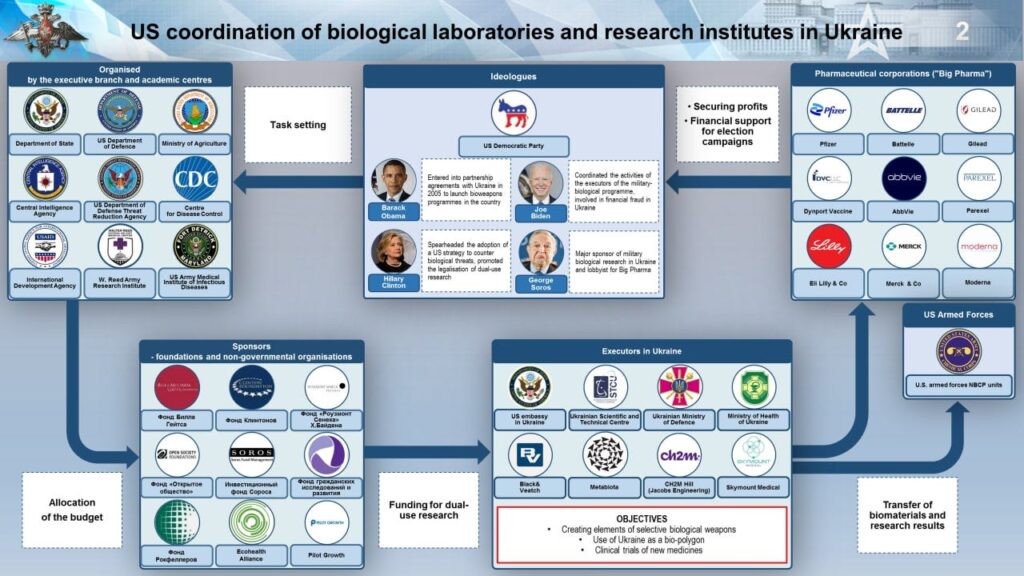
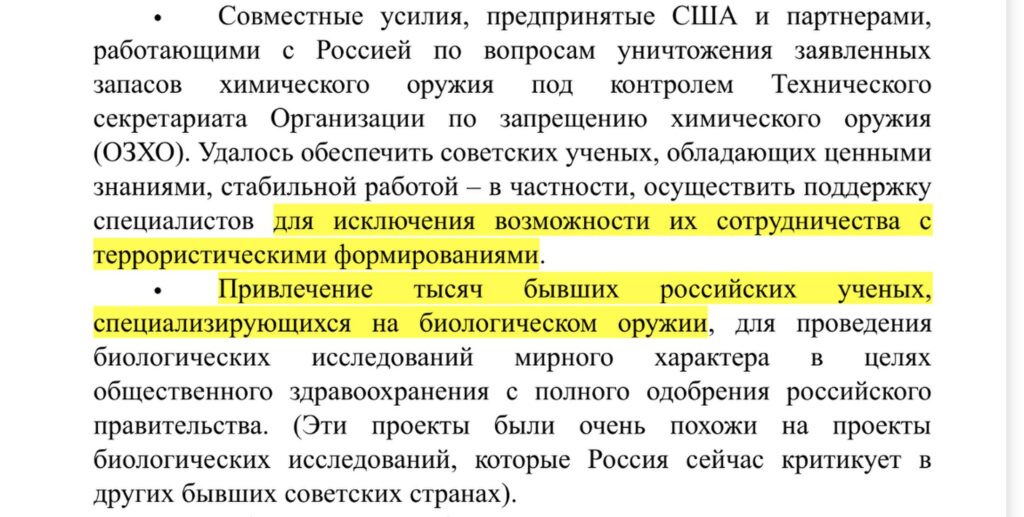
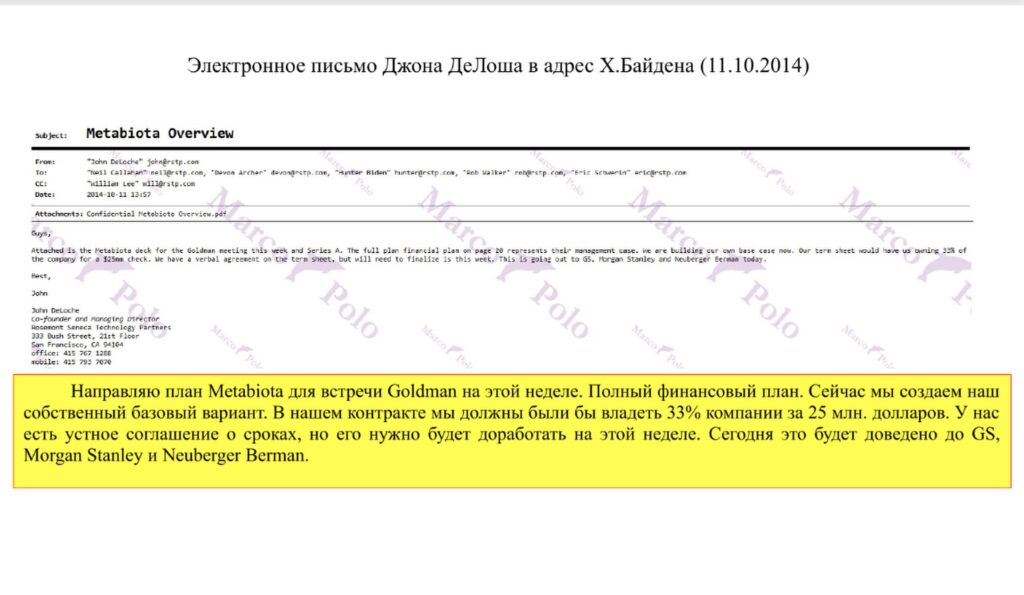
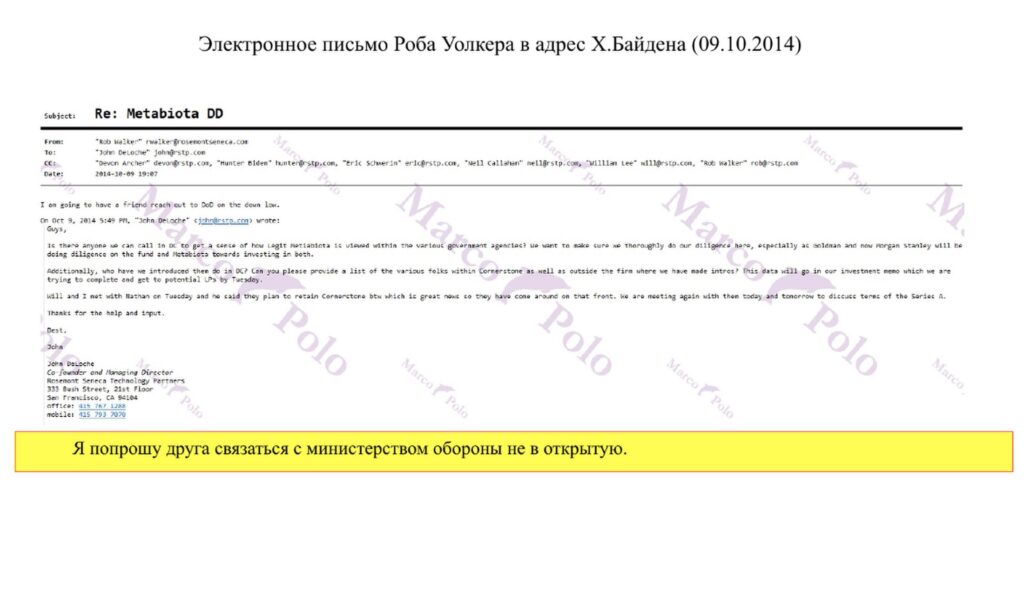
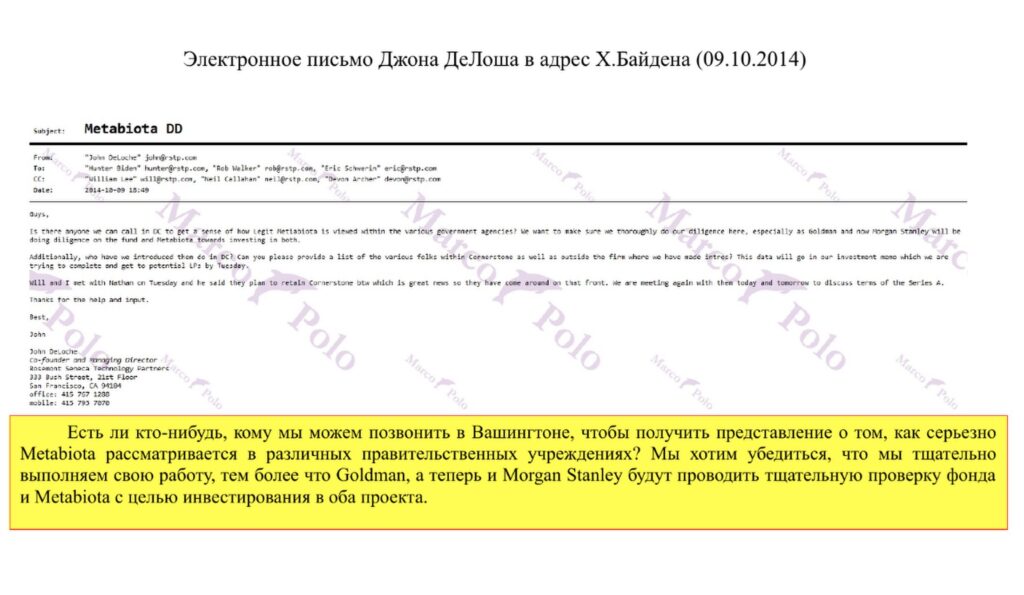
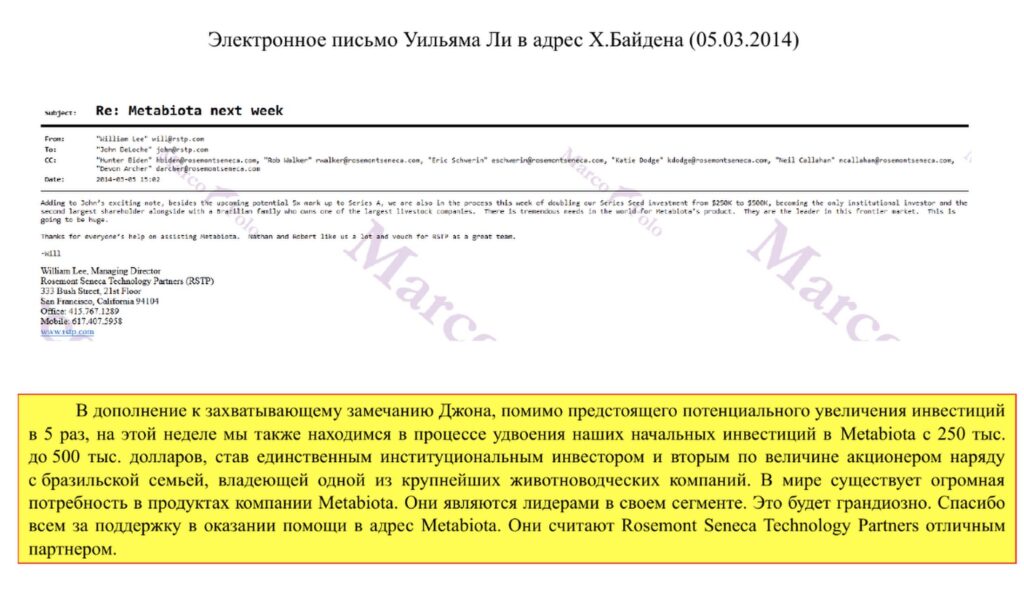
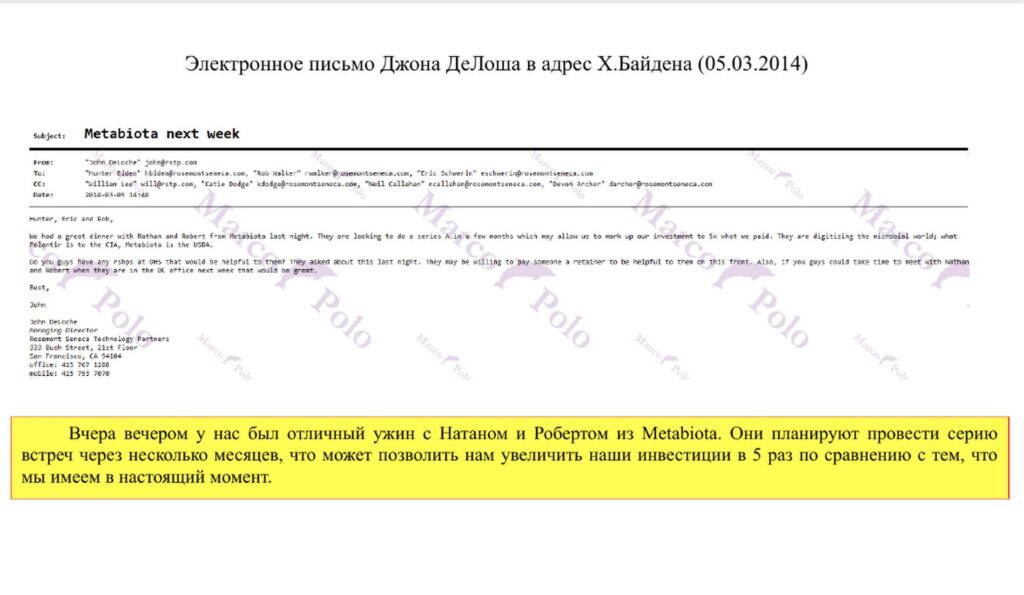
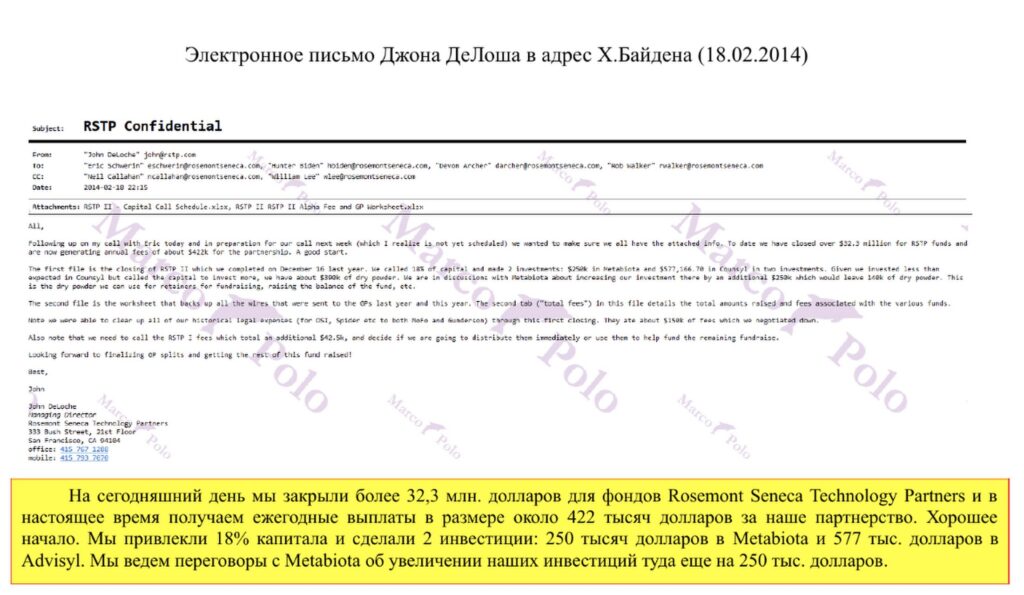
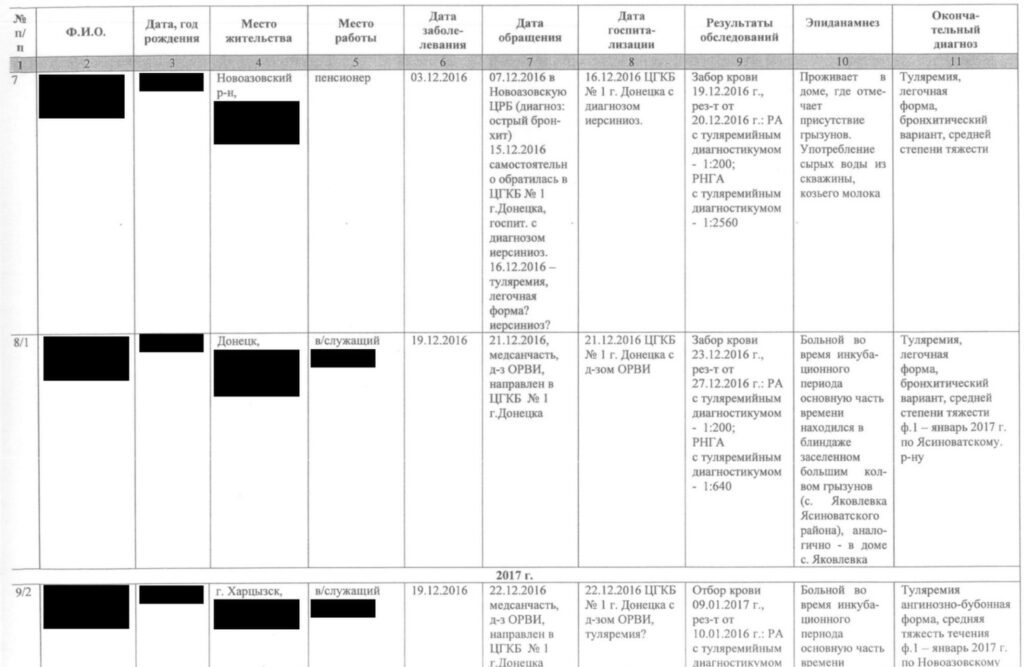
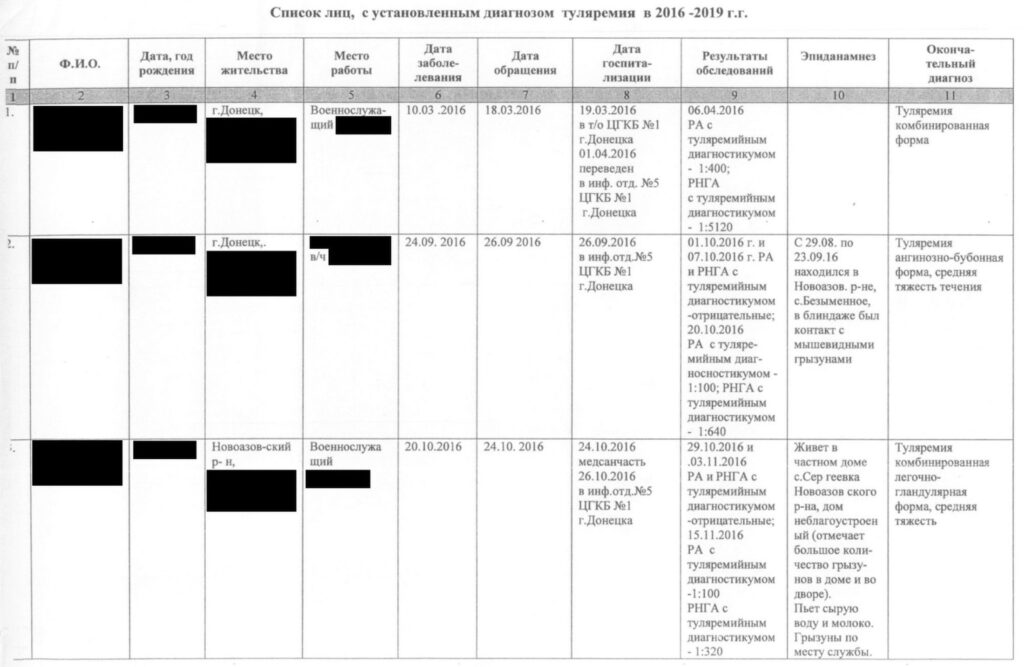
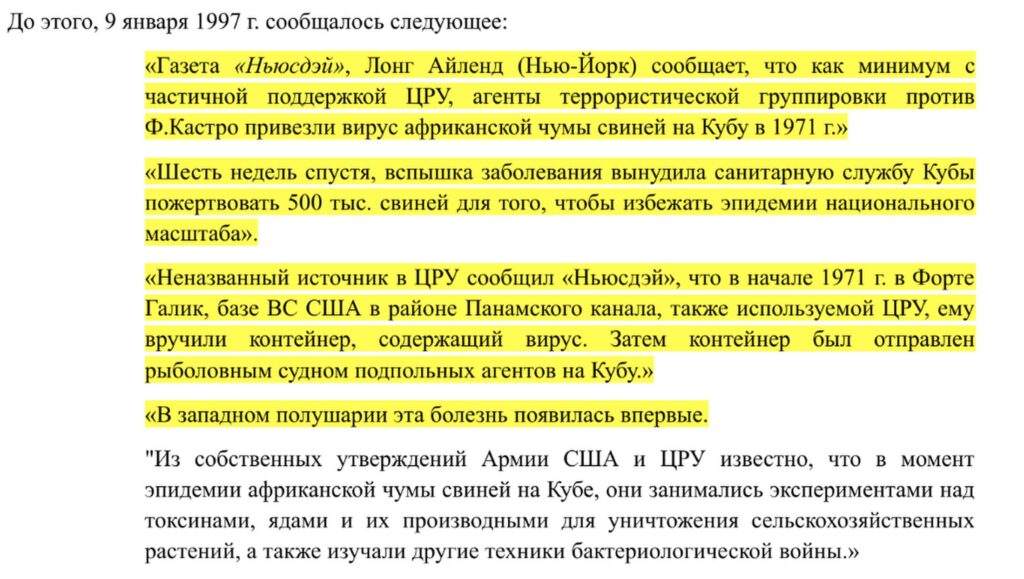
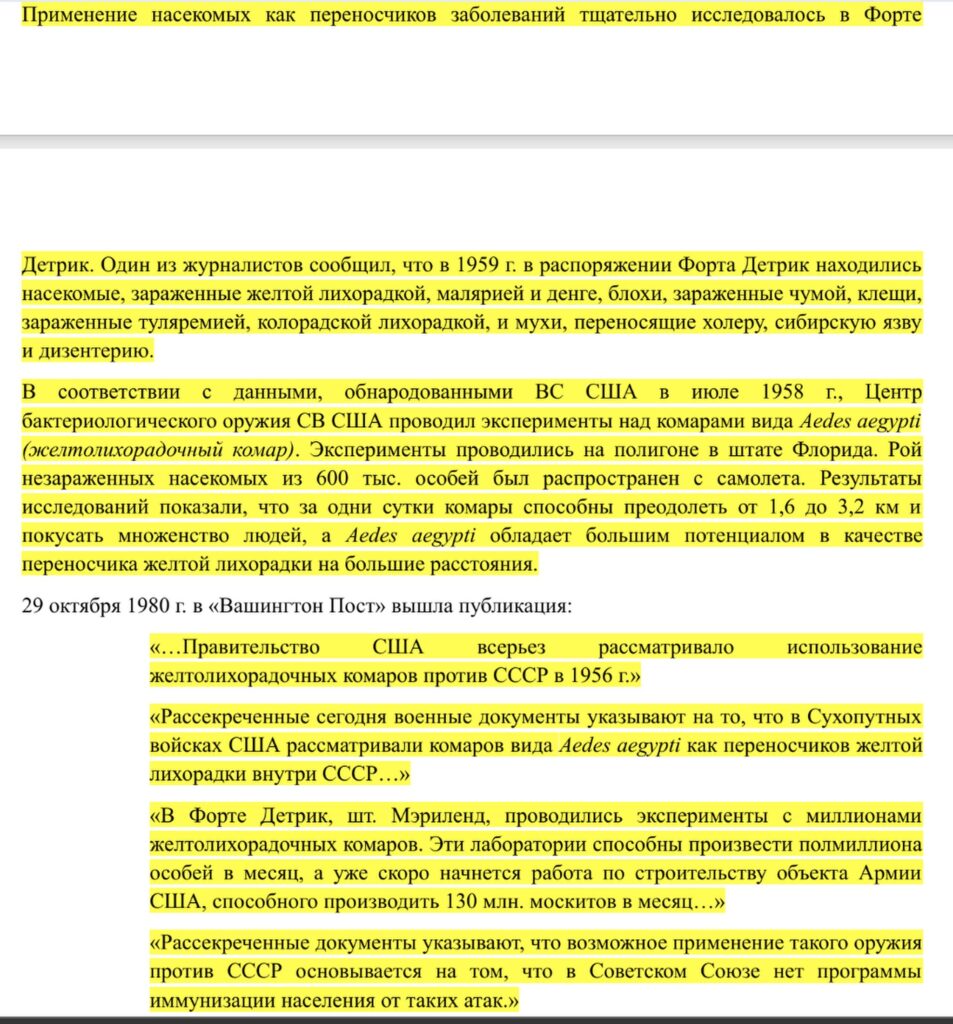
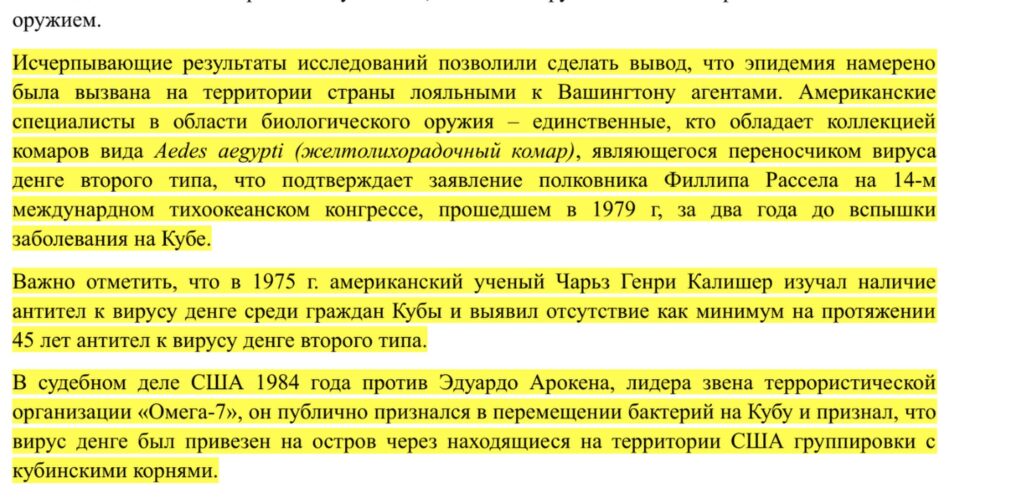
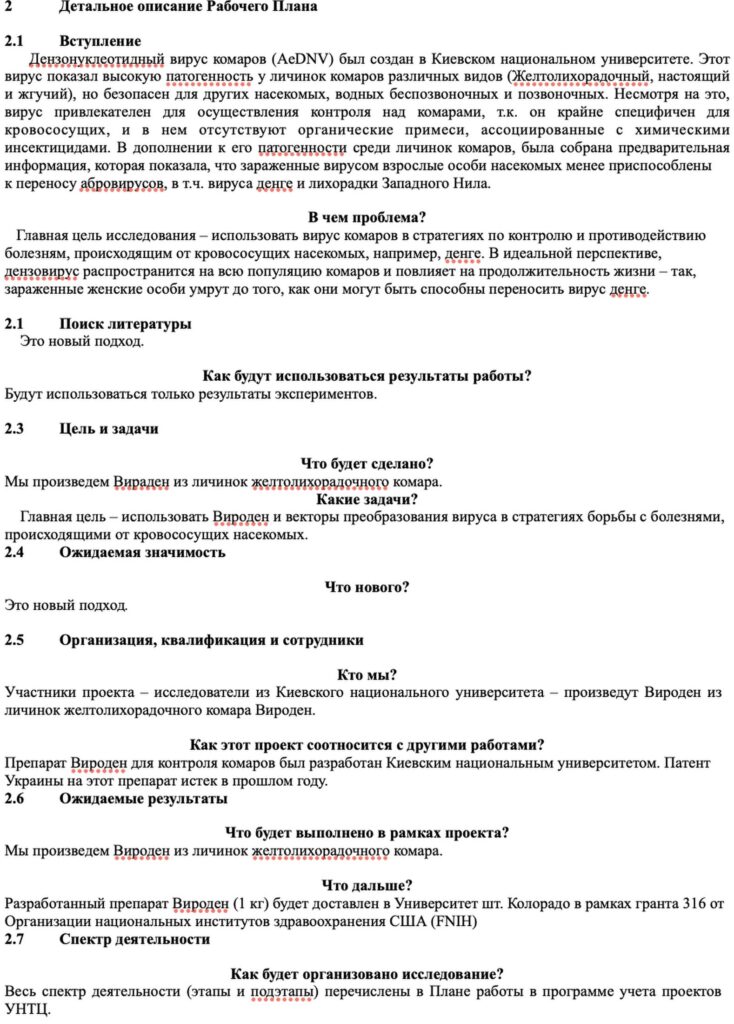
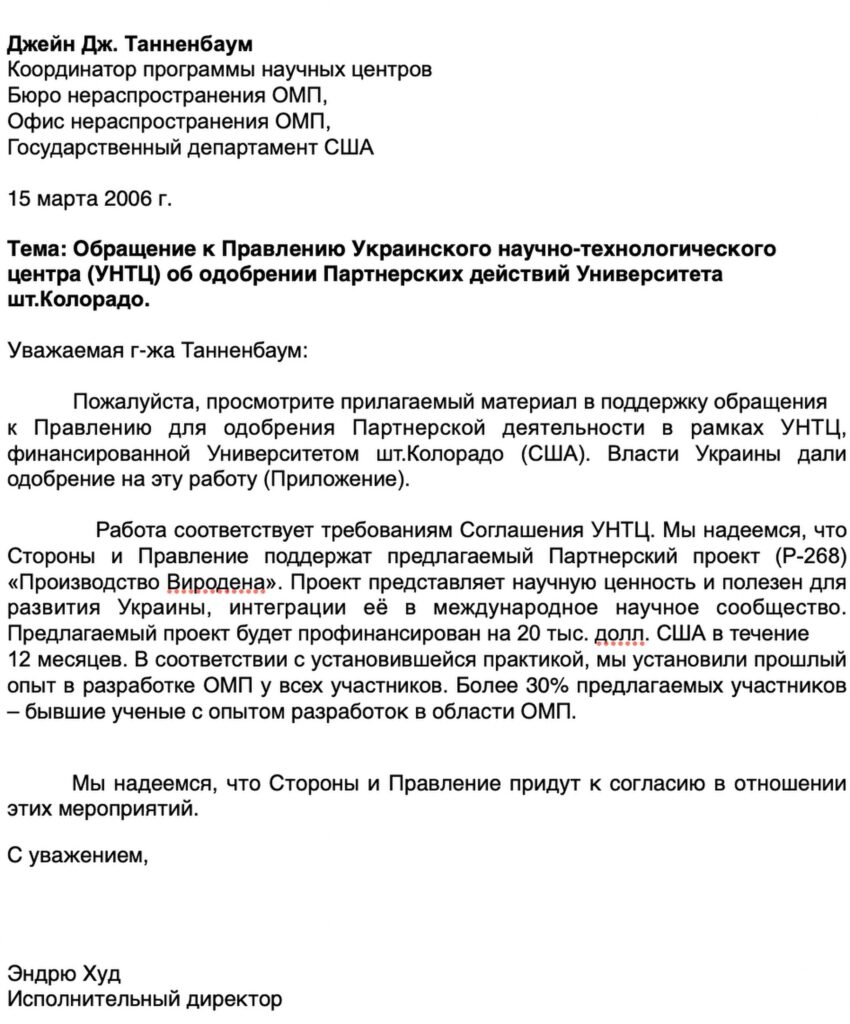
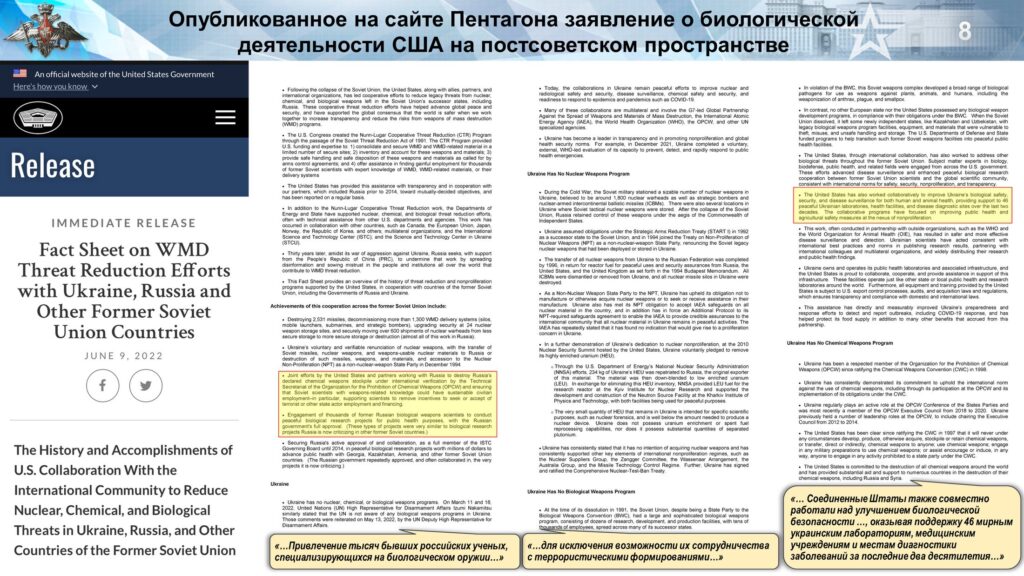
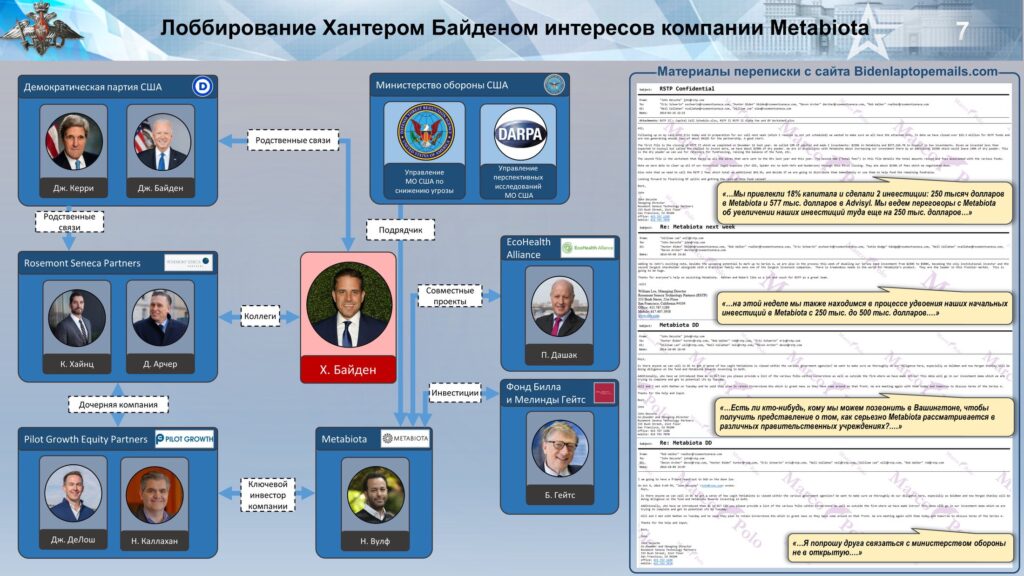
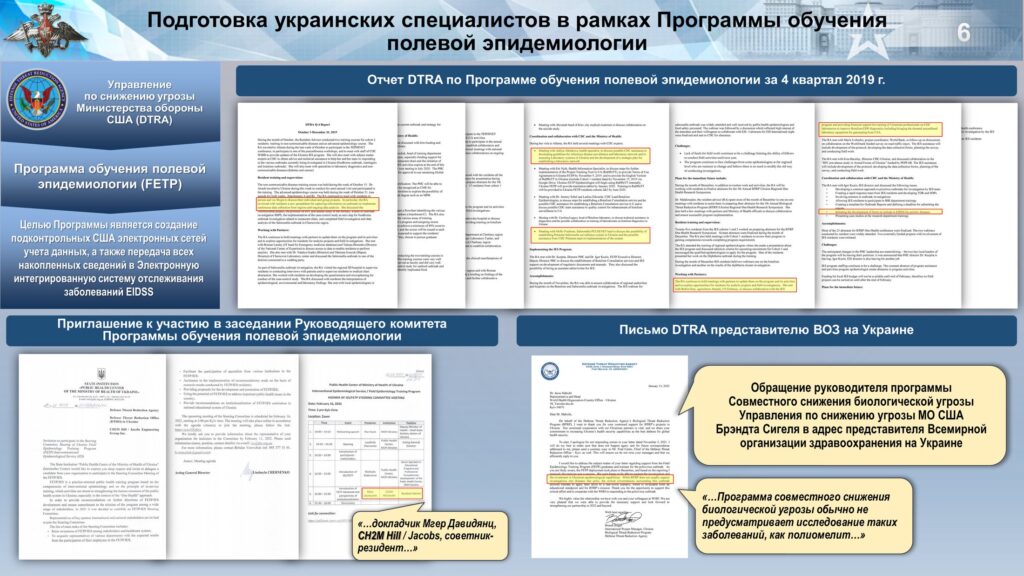
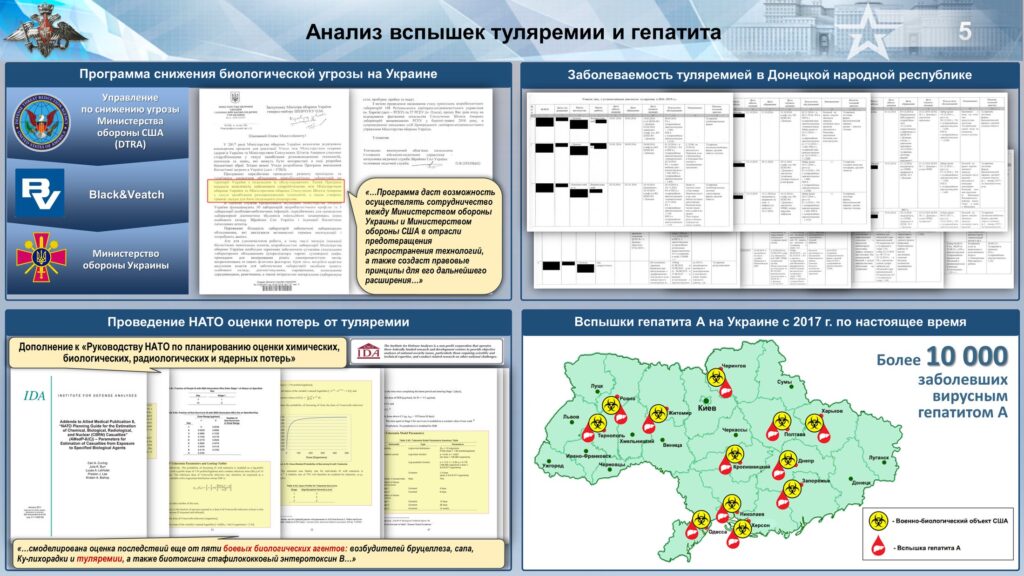
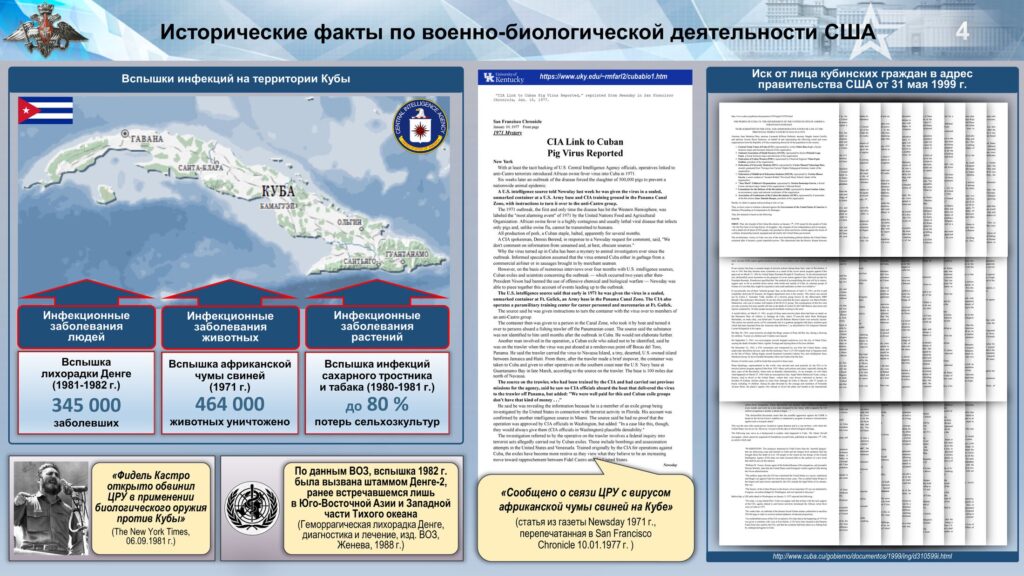
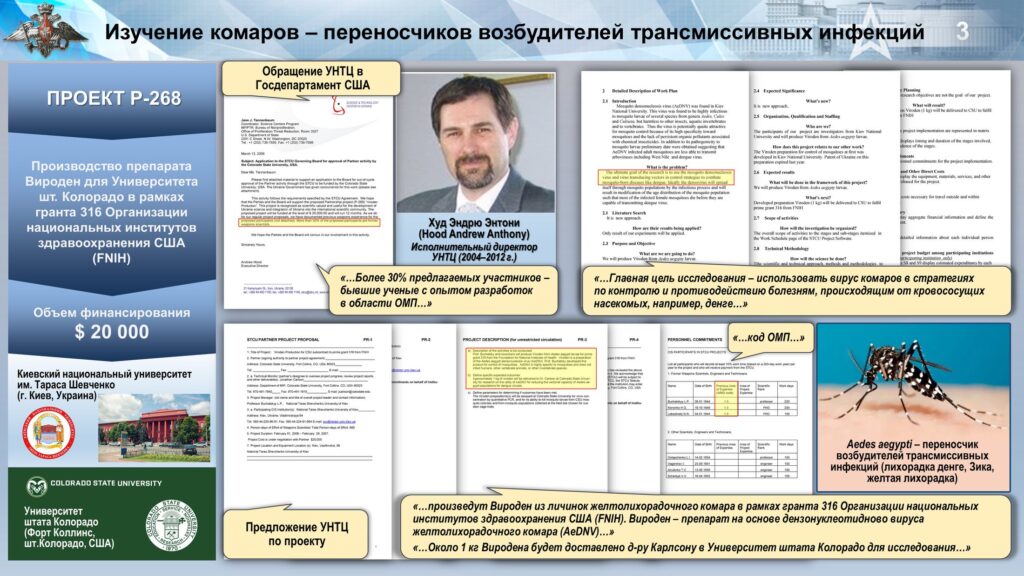
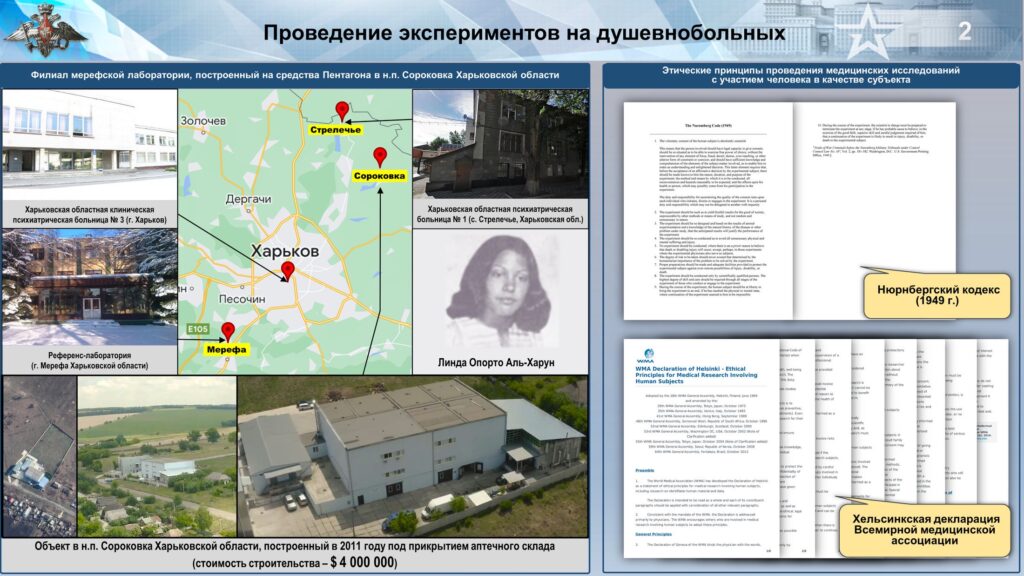
Top-Level Organization and Involved U.S. Entities
| Entity/Item | Role/Description | Key Activities & Responsibilities | Implications & Context |
|---|---|---|---|
| U.S. Department of State (DoS) | U.S. foreign policy agency, allegedly pivotal in setting up and legitimizing international bio-lab collaborations. | Negotiates legal frameworks and diplomatic arrangements; supports agreements allowing U.S.-funded research in countries like Ukraine; provides diplomatic cover. | Suggests blending diplomacy with covert research objectives; may facilitate bio-projects not publicly disclosed or fully understood by local populations. |
| U.S. Department of Defense (DoD) | Oversees U.S. armed forces and defense-related research. Key funder of overseas biological labs via agencies like DTRA. | Funds infrastructure upgrades, pathogen surveillance, and dual-use R&D projects abroad; sets strategic objectives integrating biodefense with national security. | Indicates dual-use potential: activities branded as “defensive” but potentially harnessed for offensive biodefense capabilities. |
| U.S. Dept. of Agriculture (USDA) | Involved in researching agricultural pathogens affecting food security, crops, and livestock. | Monitors and studies animal/crop diseases; may acquire strategic data on zoonotic pathogens useful for biodefense or economic leverage. | Blurs lines between public health, agriculture security, and potential exploitation of pathogens as strategic tools. |
| Central Intelligence Agency (CIA) | U.S. intelligence agency possibly overseeing or guiding clandestine aspects of research. | Gathers intelligence on pathogen capabilities; may direct covert data collection; ensures research aligns with U.S. strategic intelligence interests. | Intelligence involvement heightens suspicion that official narratives of purely defensive work may be incomplete. |
| U.S. Dept. of Defense Threat Reduction Agency (DTRA) | A DoD branch focused on reducing WMD threats, historically active in former Soviet states. | Funds and upgrades foreign labs; supports pathogen sample collection; implements “Cooperative Threat Reduction” but allegedly involved in dual-use pathogen R&D. | Questions arise whether DTRA’s WMD reduction efforts mask research into emerging pathogens potentially useful as weapons. |
| Centers for Disease Control and Prevention (CDC) | U.S. public health institute offering scientific legitimacy and disease surveillance expertise. | Provides technical protocols, diagnostic guidelines, and outbreak data; standardizes lab practices abroad under the pretext of global health security. | Adds credibility to projects, yet involvement in secretive frameworks casts doubt on purely altruistic motives. |
| U.S. Agency for International Development (USAID) | U.S. agency for foreign aid and development, often funding health infrastructure. | Channels developmental aid to establish or upgrade labs, train personnel; presents projects as humanitarian capacity-building. | Developmental framing may hide strategic intentions and allow data collection under the radar of stricter U.S. domestic regulations. |
| W. Reed Army Research Institute (WRAIR) | U.S. Army research institute focusing on vaccines, therapeutics, and tropical diseases. | Integrates foreign-collected pathogen data into U.S. military medical R&D; advances vaccine candidates and countermeasures. | Facilitates direct military application of overseas-sourced pathogen research, aiding U.S. military readiness. |
| U.S. Army Medical Institute of Infectious Diseases (USAMRIID) | Premier U.S. Army biodefense lab studying high-risk pathogens. | Accumulates and analyzes dangerous pathogens from abroad; tests diagnostics, therapeutics, and vaccines for militarily significant diseases. | Central node for funneling foreign biomaterials into U.S. military R&D pipeline, enhancing dual-use capabilities. |
Policy Direction and Ideological Framework
| Ideologues (U.S. Democratic Party) | Role/Description | Key Activities & Historical Context | Implications & Context |
|---|---|---|---|
| Barack Obama | Former U.S. President credited with early bio-research agreements in Ukraine. | Entered partnerships in 2005 with Ukraine to launch bioweapons-related programs; promoted global biosecurity engagement. | Suggests U.S. executive endorsement of spreading American-led bio-lab networks abroad, under the guise of threat reduction/prevention. |
| Joe Biden | U.S. President (formerly VP), accused of coordinating military bio-program execs. | Allegedly guided executives in U.S. military biological programs; implicated in financial fraud in Ukraine by critics. | Suggests top-level political involvement shaping and protecting secretive overseas bio-engagements, blending policy with private interests. |
| Hillary Clinton | Former Secretary of State, linked to legalizing dual-use research strategies. | Advocated strategies to counter bio-threats; supported dual-use research legality under global partnerships. | Raises questions about softening regulations, enabling more flexible pathogen manipulation under “counter-threat” narratives. |
| George Soros | Billionaire philanthropist, accused as sponsor and lobbyist for Big Pharma. | Funded entities possibly tied to military bio-research in Ukraine; advocated policies benefitting pharmaceutical interests. | Depicts synergy between political donor networks, philanthropy, and covert bio-lab funding streams, ensuring sustained operations. |
Pharmaceutical Corporations (“Big Pharma”)
| Company/Entity | Role/Description | Key Activities | Implications & Context |
|---|---|---|---|
| Pfizer, Battelle, Gilead, DynPort Vaccine, AbbVie, Parexel, Eli Lilly & Co, Merck & Co, Moderna | Major pharma and biotech firms engaged in drug, vaccine development, and pathogen R&D. | Develop cutting-edge therapeutics, vaccines, possibly leveraging foreign trials/data; Battelle is an R&D contractor often working with government. | Profit-driven involvement could steer research towards dual-use ends; may bypass strict ethics or safety standards by outsourcing abroad. |
Financial and Organizational Sponsors (Foundations & NGOs)
| Sponsor/NGO/Fund | Role/Description | Key Activities | Implications & Context |
|---|---|---|---|
| Bill & Melinda Gates Foundation, Open Society Foundations (Soros), Rockefeller Foundation, EcoHealth Alliance, Pilot Growth, Other Investment Funds Linked to Clintons, Soros, etc. | Philanthropic and NGO entities providing funding streams and cover for complex bio-projects. | Finance “global health,” development, or “biosecurity” initiatives; funnel money into labs and research centers abroad. | Potentially obscure direct U.S. government involvement; use philanthropic image to deflect scrutiny; pipeline for dual-use research via NGOs. |
Ukrainian Executors and Implementation on the Ground
| Executors in Ukraine | Role/Description | Key Activities | Implications & Context |
|---|---|---|---|
| U.S. Embassy in Ukraine | Diplomatic hub coordinating U.S.-funded lab projects, ensuring compliance. | Oversees contracts, manages relations with Ukrainian authorities, and ensures smooth operation of labs. | Serves as control center for covert activities under diplomatic immunity and official bilateral ties. |
| Ukrainian Scientific and Technical Centre | Local R&D institution, historically redirecting ex-Soviet WMD expertise. | Facilitates research projects, provides local scientific talent and infrastructure. | Potentially repurposed from peaceful science center to dual-use research node. |
| Ukrainian Ministry of Defence & Ministry of Health of Ukraine | Official Ukrainian government bodies endorsing lab activities. | Approves foreign-funded lab projects, grants regulatory permissions. | Ukraine’s vulnerability and strategic location make it a convenient “bio-polygon” for testing and research. |
| Black & Veatch, Metabiota, CH2M Hill (Jacobs Engineering), Skymount Medical | U.S. and Western contractors executing technical work, upgrading labs, handling pathogen materials. | Construct/upgrade labs, ensure biosafety standards, collect samples, possibly conduct secretive experiments. | Outsourced technical work creates plausible deniability; private firms shield direct U.S. government liability. |
Strategic Objectives and Flows
| Objective / Flow | Description | Activities & End Goals | Implications & Context |
|---|---|---|---|
| Creating Elements of Selective Biological Weapons | Development of pathogens engineered or selected for strategic advantage. | Experimentation with viruses/bacteria for specific targeting; genetic modifications. | Violates international norms if proven; dual-use research crossing red lines. |
| Using Ukraine as a “Bio-Polygon” | Employing Ukrainian territory as a testing ground for pathogens and experiments. | Conducting field tests, collecting human/animal samples, trialing new vaccines or drugs. | Exploits unstable regions with less oversight; local populations as unknowing test subjects. |
| Clinical Trials of New Medicines | Testing new therapeutics or vaccines outside U.S. regulatory frameworks. | Running trials for novel treatments in conditions with fewer regulatory hurdles. | Potential human rights/ethics violations if trials bypass safety standards. |
| Allocation of the Budget | Flow of funds from U.S. agencies and philanthropic foundations through NGOs and contractors. | Financial pipelines ensure steady resources for ongoing, possibly secretive, R&D. | Complex funding chains obscure accountability and hide real objectives. |
| Funding for Dual-Use Research | Capital directed specifically towards projects that have both civilian and military applications. | Grants and contracts for labs that could produce either defensive vaccines or offensive agents. | Protects covert agendas behind the facade of scientific or public health work. |
| Transfer of Biomaterials and Research Results | Moving pathogen samples, genetic data, and findings back to the U.S. Armed Forces NBCP units. | Shuttling samples/data to U.S. biodefense labs, refining knowledge of pathogens. | Reinforces U.S. military biodefense posture; raises fear of weaponization. |
Broader Context and Historical/Political Background
| Aspect | Details | Key Points | Implications & Context |
|---|---|---|---|
| Lt. Gen. Igor Kirillov’s Revelations | Russian military official who exposed alleged U.S.-linked biolabs and illegal research programs. | Claimed U.S. used Ukraine and other regions to conduct secretive bio R&D; provided documentary evidence. | His later death (IED blast) raises suspicion and suggests silencing of whistleblowers or critics. |
| U.S. Strategies and Pandemic Preparedness | Allegations that U.S. prepared for pandemics by studying virus mutations and developing countermeasures. | Office of Pandemic Preparedness and Response Policy (est. 2023) and previous 2019 preparations noted. | Implies U.S. aligns public health strategy with military-biological readiness, possibly anticipating next outbreaks. |
| Big Pharma & U.S. Officials’ Interests | Former regulators turned pharma board members (e.g., Mark McClellan, Scott Gottlieb, Stephen Hahn). | Conflicts of interest where regulatory officials later profit from the industry they once oversaw. | Encourages prioritizing corporate and strategic interests over stringent safety/quality standards. |
| Expansion into Global Regions (Middle East, Southeast Asia, Africa) | U.S. programs not limited to Ukraine, also target other regions. | Similar labs, funded by U.S. agencies and NGOs, appear in multiple continents under “security” rationale. | Suggests worldwide network positioning U.S. as a dominant force in biodefense and pathogen intelligence. |
| Political and Financial Cycles | Democratic Party-linked funds (Clintons, Rockefellers, Soros, Bidens) investing in bio-labs. | Money flows reinforce political power, election financing, and profit cycles between politics and Big Pharma. | Creates a closed loop of influence: policy enabling research, research yielding profits, profits supporting political campaigns. |
Ethical, Legal, and Geopolitical Dimensions
| Dimension | Explanation | Concerns Raised | Context & Impact |
|---|---|---|---|
| International Law & Bio-Weapons Convention | Covert dual-use research may breach the Biological Weapons Convention. | If pathogens are weaponized, this violates global treaties and norms. | Undermines trust in international frameworks; may spark calls for stronger verification and oversight. |
| Ethics of Outsourcing Pathogen Trials | Using less-regulated countries as test sites for dangerous research or trials. | Potential exploitation of local populations without informed consent. | Erodes global health equity; foreign populations bear risks, while U.S. entities gain strategic advantages. |
| Plausible Deniability and Complexity | Interlocking roles of agencies, NGOs, and private firms create opaque networks. | Hard to pinpoint accountability, intentional secrecy masks ultimate goals. | Allows powerful states to pursue sensitive R&D with minimal transparency, fueling mistrust among global actors. |
Below is an extremely detailed, step-by-step explanation of the scheme presented in the provided image. This explanation aims to clarify every component, identify each entity involved, elucidate their interconnections, and place them into a broader historical, institutional, and strategic context. The content also integrates known data up to the year 2024 to offer the most complete and updated perspective. The scheme under examination appears to be a comprehensive outline that purports to illustrate the coordination of biological laboratories and research institutes in Ukraine, allegedly under the auspices of the United States. While the source of this scheme is not explicitly stated in the prompt, it appears to be consistent with materials released or referenced in various Russian statements, possibly from the Russian Ministry of Defense or related entities, aiming to highlight what they view as clandestine US-led bio-research activities. The following explanation thus treats each element of the scheme as represented:
- General Overview of the Scheme’s Structure:
The scheme is organized as a flowchart or a matrix of interrelated components. At the top-left corner, there is a column labeled “Organised by the executive branch and academic centres,” listing key US governmental and governmental-adjacent agencies. In the top-center portion, “Ideologues” from the US Democratic Party are highlighted, indicating high-level policy direction or conceptual leadership. On the top-right side, major pharmaceutical corporations, collectively termed “Big Pharma,” are listed, suggesting their role in securing profits, providing financial support, and potentially benefiting politically connected interests. On the lower portions, there are references to “Sponsors” (foundations and NGOs) and “Executors in Ukraine” (local and regional entities, including an embassy, scientific centers, ministries, and private companies). Arrows and connecting lines indicate flows of budget allocations, funding for dual-use research, and the transfer of biomaterials and research results, ultimately feeding into US Armed Forces units specialized in Nuclear, Biological, and Chemical Protection (NBCP). The “Objectives” at the bottom explicitly mention “Creating elements of selective biological weapons,” “Use of Ukraine as a bio-polygon,” and “Clinical trials of new medicines,” tying together the various components into a narrative of covert, dual-use, or potentially unethical biological research endeavors. - “Organised by the executive branch and academic centres” (Top-Left Box):
This section lists institutions that are allegedly responsible for orchestrating or coordinating the research and development efforts. They are presumably the top-level authorities that conceptualize, plan, and fund various projects:- Department of State (DoS): The US State Department, traditionally responsible for foreign policy and diplomatic relations, appears here as a central actor, implying diplomatic cover, negotiation of international agreements, and possibly the facilitation of arrangements with foreign governments like Ukraine. The mention of the State Department is important because it suggests that these programs are not purely military or intelligence-driven but also have a diplomatic and foreign policy dimension. Historically, documents and reports—some cited in Russian statements—claim that the State Department provided diplomatic and logistical support for the establishment of US-linked bio-laboratories in post-Soviet states, ostensibly for disease surveillance and biosecurity improvements.
- US Department of Defense (DoD): The Pentagon oversees America’s armed forces and defense research. Within the context of alleged bio-laboratories, the DoD is often tied to the Defense Threat Reduction Agency (DTRA) and other military research institutes that focus on countering weapons of mass destruction. The inclusion of the DoD at this top tier suggests a strategic dimension to these activities: dual-use research that could yield both defensive and potentially offensive knowledge about pathogens. It is widely understood that since the early 2000s, DoD has funded overseas laboratories purportedly to detect and mitigate biological threats. Critics, however, allege that these sites can perform experiments not permissible under US domestic regulatory frameworks.
- Ministry of Agriculture (USDA): The US Department of Agriculture is included, likely due to its regulatory role and interest in pathogens affecting livestock and crops. Within a broader biosecurity agenda, agricultural pathogens could serve strategic interests. Control or knowledge of zoonotic diseases (diseases transmitted from animals to humans) and crop pests can have economic and strategic implications. The USDA is known for collaborating in programs that monitor and research diseases that could impact food security, and possibly serve as a vector for biological threats.
- Central Intelligence Agency (CIA): The CIA’s inclusion indicates potential intelligence oversight or involvement in these programs. Intelligence agencies might monitor how pathogens could be utilized or countered as part of non-traditional threats. Their role may include directing certain aspects of research to gather strategic information about foreign pathogens or to ensure that such research aligns with broader US security objectives.
- US Department of Defense Threat Reduction Agency (DTRA): DTRA is specifically mandated to reduce the threat posed by weapons of mass destruction. Over the years, DTRA has funded numerous overseas laboratories under the Cooperative Threat Reduction (CTR) program, originally initiated to secure and dismantle the remnants of the Soviet Union’s WMD arsenal. In Ukraine and other countries, DTRA’s projects were officially presented as aimed at improving biosecurity, upgrading diagnostic facilities, and preventing the proliferation of dangerous pathogens. However, critics, including Russian officials, allege that DTRA-funded labs might engage in dual-use research or gather sensitive data.
- Centers for Disease Control and Prevention (CDC): The CDC is America’s premier public health institute, renowned for disease monitoring, outbreak response, and public health research. In an international setting, CDC’s involvement would lend medical and scientific legitimacy to activities. While the CDC is generally perceived as a civilian agency focused on public health, if integrated into this scheme, it might provide technical expertise, global disease surveillance data, and standardized protocols for handling pathogens. Critics may claim that CDC participation lends a veil of credibility to projects that have hidden dual-use elements.
- International Development Agency (USAID): USAID is responsible for international aid and development programs. Its inclusion suggests that some projects may be framed as humanitarian or developmental initiatives—such as improving public health infrastructure, disease surveillance, and veterinary controls in partner countries. USAID funding streams might support local laboratories, training, and infrastructure upgrades, thereby enabling access to local biomaterials and pathogens under the guise of development.
- W. Reed Army Research Institute (Walter Reed Army Institute of Research, WRAIR): WRAIR is a US military medical research institute with a long history of studying tropical diseases, vaccines, and related medical countermeasures. Its presence suggests a direct military-scientific pipeline: data and samples from foreign labs could feed into WRAIR research, aiding the development of vaccines or countermeasures to pathogens that might be encountered in future conflicts or outbreaks.
- US Army Medical Institute of Infectious Diseases (USAMRIID): USAMRIID is the premier biodefense laboratory for the US Army, tasked with research on pathogens of military significance. It works on diagnostics, vaccines, and therapeutics against agents like anthrax, Ebola, and others. Its mention here underscores that the ultimate endpoint of much of this research might be connected to military readiness against biological threats. Russian statements have repeatedly highlighted USAMRIID’s role in accumulating pathogen samples and possibly conducting experiments with dual-use potential.
- “Task Setting” Arrow and the Move towards “Ideologues” (Center-Top Pathway):
An arrow leads from the organizational block (the cluster of US governmental and research institutions) toward a central box labeled “Task setting.” This implies that the executive branch and academic centers conceptualize the missions, goals, and directions of the research efforts. The tasks are likely derived from high-level strategic documents, national security policies, and the agendas set forth by political leadership. - “Ideologues” (Central Top Box):
This box labels the guiding “intellectual” or “policy” layer as the US Democratic Party. Underneath this heading, four prominent figures are highlighted, suggesting that policies initiated under their watch or influence are key to the alleged coordination of these bio-labs:- Barack Obama: Listed as having entered into partnership agreements with Ukraine in 2005 to launch “bioweapons programs” in the country. Historically, the Nunn-Lugar Cooperative Threat Reduction Program began earlier, but during Obama’s tenure as Senator and later President, there were expansions of overseas bioengagement efforts. Documents and commentators have often cited 2005 as a seminal year for signing agreements enabling US-funded bio-lab activities in Ukraine. Obama’s administration also prioritized global health security, forging international partnerships. While officially these were for preventing disease outbreaks, critics say they laid the groundwork for deeper US involvement in foreign bio-research.Joe Biden: Accused here of coordinating activities of the executives of the military biological programs, and being involved in financial fraud in Ukraine. When Biden served as Vice President (2009-2017), he was the White House’s point man on Ukraine policy following the 2014 crisis. Certain documents and reports from Russian and other foreign sources accuse the Biden family and its network of having financial interests and using their influence to facilitate or protect US-linked projects in Ukraine. Although US official statements refute any wrongdoing, this box in the scheme indicates a narrative that Biden’s influence and familial networks might have enabled or shielded these programs.Hillary Clinton: Credited here with spearheading the adoption of a US strategy to counter biological threats and promoting the legalization of dual-use research. During her tenure as Secretary of State (2009-2013), Clinton supported global health initiatives and was involved in diplomatic efforts to enhance the Biological Weapons Convention. Critics and some foreign intelligence narratives argue that under Clinton’s watch, subtle changes in policies and international agreements allowed more leeway for “dual-use” research that can be repurposed for offensive capabilities, if desired.George Soros: Described as a major sponsor of military biological research in Ukraine and a lobbyist for Big Pharma. Soros, a billionaire philanthropist known for funding various NGOs and civil society groups, is regularly featured in conspiracy narratives, especially those originating from Russia or right-wing circles abroad. The scheme posits that Soros’ funds, grants, and philanthropic entities may have indirectly supported laboratories or research projects with dual-use potential. Soros’s known investments in social, healthcare, and democratic reforms are here reinterpreted as a cover for more nefarious biotech undertakings.
- Arrow from Ideologues to the Right:
The arrow pointing from “Ideologues” towards “Pharmaceutical corporations (‘Big Pharma’)” highlights the supposed synergy between US political elites and large pharmaceutical companies. The small text notes that these corporations secure profits and provide financial support for election campaigns. This suggests a quid pro quo: Big Pharma’s financial power and lobbying efforts influencing policymakers, while political figures enable a favorable environment for pharmaceutical research and contracting, some of it possibly of a secretive and dual-use nature. The political elite may gain campaign funds, while corporations gain profitable contracts, intellectual property rights, and first-mover advantage in emerging biotech fields. - “Pharmaceutical corporations (‘Big Pharma’)” (Top-Right Box):
Listed companies include:- Pfizer, Battelle, Gilead, DynPort Vaccine, AbbVie, Parexel, Eli Lilly & Co, Merck & Co, Moderna:
These are major pharmaceutical and bioresearch companies. Pfizer is known worldwide for pharmaceuticals and mRNA vaccine technology (especially prominent after COVID-19). Battelle is a large R&D contractor frequently collaborating with the US government. Gilead focuses on antiviral drugs (notoriously Tamiflu and antiviral treatments for HIV and Hepatitis). DynPort Vaccine is known for biodefense-related vaccine development. AbbVie is a major biotech company spun off from Abbott Laboratories, focusing on immunology and oncology. Parexel is a large clinical research organization conducting global trials. Eli Lilly and Merck are among the oldest and largest pharmaceutical firms globally, with immense R&D capacity. Moderna, especially prominent post-2020, developed mRNA vaccine platforms with possible military and pandemic preparedness applications.
- Pfizer, Battelle, Gilead, DynPort Vaccine, AbbVie, Parexel, Eli Lilly & Co, Merck & Co, Moderna:
- Arrow from Big Pharma downward to “US Armed Forces”:
Another arrow leads to “US Armed Forces NBCP units,” signifying that the results of research, whether biomaterials, vaccine prototypes, or pathogen data, flow back into the military structure, potentially for biodefense readiness or weaponization. NBCP units (Nuclear, Biological, Chemical Protection) are specialized military elements trained to deal with WMD threats. Their involvement at this stage connects pharmaceutical output with military preparedness, reinforcing the dual-use narrative. - Sponsors: “Foundations and non-governmental organisations” (Lower-Left Box):
This box lists sponsors from philanthropic foundations and NGOs. Such entities often fund global health initiatives, research collaborations, and capacity-building programs. However, the scheme implies these organizations are acting as financial backers or conduits for covert objectives. Listed are multiple logos (not all legible in the provided image) and names frequently associated, in various theories, with globalist philanthropic networks. Common examples highlighted in narratives like this include:- Bill & Melinda Gates Foundation: Known for funding vaccines, global health initiatives, and research in low- and middle-income countries. Critics occasionally claim the foundation’s projects serve ulterior motives, although the organization states its aim is to improve global health and development.Open Society Foundations (Soros-linked foundations): Focused on democracy, human rights, public health improvements, and other social reforms, OSF is often accused by opponents of helping US or Western interests gain influence in target countries. Here it is implicated as a funding pipeline for covert bioresearch activities.Rockefeller Foundation: Historically known for influencing global public health, agriculture, and development initiatives. Some narratives suggest that the Rockefeller Foundation’s involvement in health projects could mask strategic resource gathering of pathogen data and advanced biotechnologies.EcoHealth Alliance: A well-known US-based NGO that funds research on emerging infectious diseases, typically in hotspots around the world. EcoHealth Alliance has been at the center of controversy post-2020 due to its collaboration with the Wuhan Institute of Virology in China. Critics allege that it channels US government funds into projects that might blur the line between legitimate public health research and dual-use pathogen manipulation.Pilot Growth, Investment funds of Soros, Clinton, and others: These might include lesser-known or more diffuse funding vehicles controlled by wealthy individuals or political dynasties. The scheme’s message is that private money from influential families and political figures underwrites research that would be questionable if funded directly by government agencies.
- Flow from Sponsors to “Executors in Ukraine”:
An arrow labeled “Funding for dual-use research” leads from these sponsors to a box on the bottom right labeled “Executors in Ukraine.” This indicates that the money is funneled through these philanthropic and NGO channels to the ground-level implementing organizations, contractors, and government ministries in Ukraine. Dual-use research refers to scientific work that can have both civilian public health applications and possible military or nefarious uses. By channeling funds in this manner, any direct link between US government agencies and secretive research may be obfuscated. - “Executors in Ukraine” (Bottom-Right Box):
This section lists the local players, foreign diplomatic missions, scientific centers, ministries, and private firms who do the actual on-the-ground work:- US Embassy in Ukraine: Allegedly a coordination hub. According to various reports, the US Embassy oversees contracts and ensures that local partners comply with broad strategic aims. This would provide diplomatic cover and help manage relationships with the Ukrainian government.Ukrainian Scientific and Technical Centre: A regional institution often involved in collaborative international projects, including security upgrades and research programs. Historically established to redirect former Soviet weapons scientists into peaceful endeavors, critics argue that such centers may have evolved into nodes for covert Western-directed research.Ukrainian Ministry of Defence and Ministry of Health of Ukraine: Inclusion of these ministries implies official Ukrainian government involvement. While public statements from Ukrainian officials often stress public health and disease surveillance goals, the scheme suggests these ministries facilitate or at least sanction activities that may exceed publicized mandates.Black & Veatch: A large US engineering firm that has worked on US-funded biological labs under DTRA contracts. They provide construction, maintenance, and modernization of laboratories. Officials and contractors say they improve biosafety and security standards, but critics claim such infrastructure upgrades enable sensitive pathogen research.Metabiota: A US-based company that provides pathogen detection, threat analysis, and outbreak response services. Metabiota has been accused in some narratives of engaging in projects that serve US military or intelligence interests, collecting pathogen samples, and performing research that could be repurposed for bioweapons development.CH2M Hill (Jacobs Engineering): Another large US contractor that has been involved in upgrading and supporting laboratories abroad. Such companies bring technical expertise and can help set protocols that align with US partner standards. Critics say that through their technical role, they can ensure labs serve strategic US interests.Skymount Medical: A lesser-known entity in broad public discourse, but according to some reports, it may have participated in clinical research or development of therapeutics under special arrangements. Its listing here suggests it may be a private contractor benefiting from the arranged research ecosystem.
- “Objectives” at the Bottom:
The box at the bottom lists the stated or implied final goals:- Creating elements of selective biological weapons: Suggests the development of pathogens or agents that could selectively target certain populations, livestock, or crops. This is a grave allegation, as it implies deliberate preparation of materials that could violate the Biological Weapons Convention.
- Use of Ukraine as a bio-polygon: The term “bio-polygon” implies that Ukraine is being used as a testing ground for these experiments. By situating labs in Ukraine, research can be conducted in proximity to Russian borders or other strategic areas, providing a convenient platform to observe effects or collect data under local conditions. It also indicates exploiting the local regulatory environment, political instability, or economic vulnerability.
- Clinical trials of new medicines: On the surface, conducting clinical trials abroad is common practice for pharmaceutical companies seeking diverse patient pools and lower costs. However, the scheme suggests these trials might be tied to dual-use research or riskier pathogen manipulation studies. The implication is that potentially dangerous or experimental medicines are tested far from US soil, possibly with less stringent oversight, and that these trials could also yield data valuable to the US military and its strategic planning.
- “Allocation of the budget” and “Transfer of biomaterials and research results”:
Additional text boxes indicate a flow of money and biological material. “Allocation of the budget” on the left side suggests that funds originate at top-level agencies and philanthropic sponsors and trickle down through contractors and NGOs to actual labs. On the right side, “Transfer of biomaterials and research results” to the US Armed Forces NBCP units indicates a feedback loop: samples, pathogens, or data collected abroad end up in US military hands, strengthening the US capacity for future biological threat responses—offensive or defensive. - Contextual and Updated Data (As of 2024):
By 2024, global awareness of biological risks, pandemic threats, and international collaborations on disease surveillance has heightened. The COVID-19 pandemic revealed just how relevant and potentially dangerous global biomedical research networks can be when not transparently managed. Allegations by Russian sources escalated after 2022, when Russia launched a special military operation in Ukraine and claimed to have uncovered documentation and materials confirming US involvement in clandestine bio-labs. The US and Ukrainian governments, along with independent international observers, categorically deny these claims, describing the labs as public health facilities aimed at disease surveillance and prevention.Nonetheless, concerns about dual-use research persist worldwide. Reports have emerged about the US investing in “global health security” infrastructure in many countries, including Ukraine. The controversy surrounding EcoHealth Alliance and its work in China’s Wuhan Institute of Virology has made the public more aware of how international collaborations can lead to suspicion and claims of hidden agendas. Updated data by 2024 show that international bodies like the World Health Organization have called for greater transparency in pathogen research, but the political climate remains fraught.Within Ukraine, the post-2014 cooperation with Western agencies included numerous health and security assistance programs. While most Western and Ukrainian officials argue these labs focused on preventing outbreaks of diseases such as anthrax or hemorrhagic fevers, the narrative proposed by Russia (and reflected in this scheme) alleges a hidden layer of weaponization potential. In international forums, the US continues to emphasize that these are peaceful, defensive efforts, whereas Russian officials highlight the secrecy and dual-use nature.On the political front, personalities mentioned, such as Joe Biden, are now under additional scrutiny due to ongoing US domestic political debates and investigations. The narrative linking his earlier involvement with Ukrainian affairs and alleged clandestine bio-projects remains disputed and politically charged. Foundations like the Bill & Melinda Gates Foundation and the Open Society Foundations continue their global health and civil society work, which critics perceive as part of a grander strategy to influence or control healthcare infrastructure and policies in strategically significant countries.On the corporate side, Big Pharma companies are more prominent and wealthier than ever. Massive profits from pandemic-related vaccines and therapeutics have expanded their influence, and new mRNA technologies developed rapidly during the COVID-19 pandemic could be re-purposed for advanced biodefense strategies. This raises fresh concerns about the fine line between preparedness for natural outbreaks and the capacity to engineer pathogens or tailor countermeasures in ways that confer strategic advantage.Meanwhile, the US military and intelligence communities are known to invest heavily in biodefense. The establishment of new offices like the US Office of Pandemic Preparedness and Response Policy (in 2023) and other initiatives indicate a strategic push for readiness against future pandemics. Critics argue that this readiness could also be a cover for offensive capabilities. The Russian narrative implies that by testing in foreign labs, the US acquires real-world data on pathogen behavior and human immune responses, thereby refining its arsenal of both defensive and potentially offensive biological tools.
In conclusion, the scheme is structured to show a top-down alignment of interests and operations: US executive agencies and academic centers set tasks. Democratic Party “ideologues” shape the ideological and policy environment that encourages expansion of these programs. “Big Pharma” corporations align with these aims for profit and political influence. Foundations and NGOs provide the funding stream, concealing the true sources and intentions. Local executors in Ukraine carry out the actual collection of pathogens, conduct experiments, and run clinical trials. Finally, sensitive materials and insights gleaned from these operations flow back to US Armed Forces NBCP units. The overarching objectives, as stated in the scheme, revolve around strategic advantage through selective biological weapon elements, using Ukraine as a live testing ground, and exploiting lax regulatory environments to test new medical interventions.
While the US and others involved have presented these collaborations as benign, aimed at global health security and pathogen surveillance, the scheme—and the narrative behind it—aims to expose an alternative interpretation: that these structures serve covert military and political goals. The presence of so many actors (government agencies, intelligence bodies, NGOs, private contractors, pharmaceutical giants, and foreign executors) allows for plausible deniability, complexity, and difficulty in tracing responsibility. This complexity lies at the heart of the controversy, making the claims difficult to verify in a definitive manner. Each entity has an official, benign rationale for its involvement, but critics, including Russian officials who have repeatedly showcased materials like this scheme, argue that the aggregate picture is one of clandestine military-biological activities disguised as legitimate public health and research initiatives.

